
















It never ceases to amaze me the varied and inspiring stories the women in the building and construction industry have to share, and it is a privilege that I get to help tell those stories to their colleagues and the wider community.
Sharing stories and sharing experiences is part of how people learn and how they improve. And this edition of Florence has some great stories that will help us all learn and grow.
From Ava Li’s (p9) childhood in China to her thriving career in the building industry, she has learned combining what you are good at and what you are passionate about is a winning combination. And sharing the knowledge she has gained across her career to help others improve and grow is a vital part of her feeling of accomplishment.
Patt Gregory (p28) also uncovers her love of helping others to learn and she has put that to good use teaching women woodworking skills and building their confidence. She also encourages women to step into the male-dominated building industry if that is the dream they want to pursue.


Raquel Manning (p25) sits down with business powerhouse Amanda Rose to discuss how hard work and dedication, powered by courage and an innovative spirit, are changing the game of gender inequality. All while building a legacy of empowerment and inspiration to pave the way for future generations of female entrepreneurs in the building and construction industry.
So thank you to all of you who have shared your stories with me and will continue to do so — you are the reason we do this and why it is successful.
Alyssa WelkeFlorence Taylor was a pioneer of women in the construction industry and her legacy is still being felt.
As an architect and publisher, Florence believed in the notion that “a woman to marry, get into the confines of the home and never be articulate in public affairs is a disgrace” and her achievements in the male-dominated architectural industry proves that.
She was known for her energy, determination and outspoken nature, a nature which distinguished her well throughout her colourful career, first as a draftsman and ultimately as a publisher of trade journals.
She was widely respected, even if her questions and criticism irritated some of her professional colleagues.
Her achievements within both of her fields had an indelible impact on the public acceptance of women in the professions.
She was a tall, striking woman, with blonde hair and blue eyes, and was known for dressing (even in the 1930s) in long sweeping skirts and a picture hat decorated with ostrich feathers.
She was born on December 29, 1879, at Bedminster, Somerset, England and was the eldest daughter of John and Eliza Parsons.
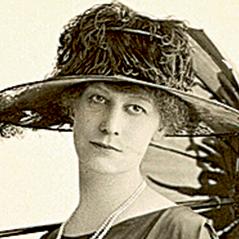
The family immigrated to Australia in 1884, where her father worked in the sewerage construction branch of the Department of Public Works, which gave Florence her first taste of working in the construction industry, as she assisted her father with his engineering calculations.
It was her father’s death in 1899 that pushed Florence into the architectural industry when she decided to become a draftsman to support her family.
She learned her trade under architect Edmund Skelton Garton, and simultaneously attended night-classes at Sydney Technical College until 1904.
During her time with Garton’s
office she was promoted to chief draftsman.
Once she completed her training she became chief draftsman to J. B. Clamp, who nominated her in 1907 for associate membership of the Institute of Architects of New South Wales.
Despite his defence of her talent (she “could design a place while an ordinary draftsman would be sharpening his pencil”), the nomination was defeated.
But this did nothing to deter Florence from thriving practice designing homes.
It wasn’t until 1920 that Florence was eventually invited to join the Institute of Architects, which she accepted.
On April 3, 1907 Florence married George Augustine Taylor.
Florence and her husband were founding members of the Town Planning Association of New South Wales in 1913 and she was its secretary for many years.
Together they started the Building Publishing Co Ltd, which produced trade journals, three of which Florence edited: Harmony, Young Australia and the Australian (later Commonwealth) Home.

Through their journals they campaigned for urban planning, improved construction methods and better materials; they also promoted the interests of engineers, architects and builders.
When George Taylor died suddenly in 1928, Florence was determined to carry on their business and although eight of the 11 journals the business was publishing was forced to cease, she maintained Building (later Building, Lighting and Engineering) (1907-72), Construction (1908-74) and the Australasian Engineer (1915-73), and edited them herself.
She continued to produce town planning schemes but relied on others to draw them as she was unable to spare time away from publishing.
Architect and publisher Florence Taylor; One of the periodical’s Florence published during her career. PHOTOS: COLLECTIONS OF THE STATE LIBRARY OF NEWSOUTHWALES.In the last edition of FLORENCE (issue 08, 2023) we made reference to a research project undertaken by the University of Technology of Sydney (UTS) and the Master Builders Association. That research project is examining how a flexible working week might promote meaningful work-life balance (WLB) in the construction industry. There is a lot of interest in this project, and some preliminary results of the research prove to be most interesting.
The industry has been asked to consider a number of detailed research questions, including:
• What does work-life balance mean to people working in the NSW Building and Construction industry?
• How does this vary across the workforce (age, gender, role, company size and sector)?
• Based on these definitions, what is the current work-life balance of people working in the NSW Building and Construction industry (from their perspective)?
• How will moving to a flexible working week affect work-life balance?
• What are the costs and benefits of moving to a “flexible” working week based on different models (for individuals, companies and clients)?
• Will a “flexible” working week assist in increasing women’s participation in construction roles within the building and construction industry?
Poor WLB is in no one’s interests. It can have significant impacts on a person’s health and wellbeing and have spill-over impacts into families, communities and wider society more generally. WLB means different things to different people, and poor WLB can occur for many reasons (personal, work-related, environmental and societal).
Long hours of work are common in some parts of the industry and can cause poor WLB for some people. However, WLB can be very good in other sectors of the industry.
The research argues that to maximise WLB for everyone in the industry, an empirically sound approach is required which reflects the full diversity of views and perspectives across the construction industry.
What is clear, is that the construction industry attracts more male than female workers. Improving the attractiveness of the industry to women no doubt will improve the industry.
Women currently make up only 13.6% of the industry’s total workforce. Three in ten professionals working in the building industry are women, but only 3.5% are building trades and technicians.
The research continues …



From a young age, Ava Li discovered she had a natural inclination for science and numbers, and her natural understanding of these areas meant Ava could more than hold her own against the boys in the male-dominated areas such as mathematics and IT. As well as excelling at maths and technology, Ava was also a natural leader –from the moment she entered school, she was a class leader.
She also stepped into leadership roles in school sport, as she was the captain of her basketball team.
Her love of sport comes from her father’s influence.
“I enjoy competition and teamwork – we spent a lot of time together and he’d say to me ‘you are good, but you can play better’.
“Competition makes me happy. I was good at ball games, ones with lots of technical skill and strategies that need team work to perform very well.”
As well as succeeding on the basketball court, she excelled academically.
Growing up in Tianjin, China, a city outside of Beijing, Ava’s natural abilities led her to study computer science at Peking University of Post and Telecommunication, majoring in Computer Science and Technology. She then pursued further study in Australia, doing a Master’s degree in commerce management from the University of Sydney. When Ava graduated from her Master’s program she made the decision to immigrate to Australia, seeking new opportunities and experiences.
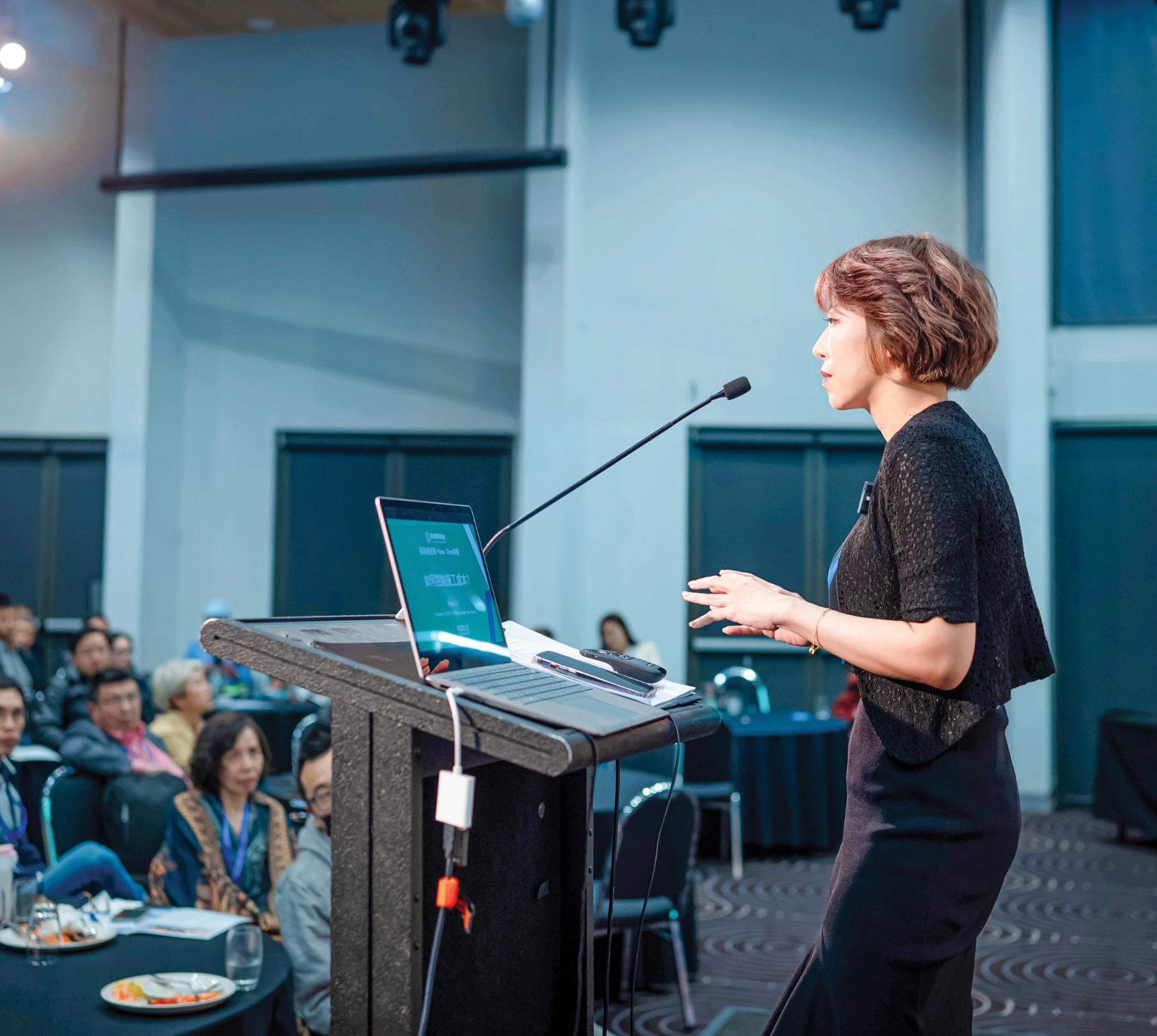 ALYSSA WELKE
ALYSSA WELKE
But her early life in China helped to mould her into the woman she is, and to put faith in her own abilities and to chase her career.
Her father was a mathematics teacher in a school and her mother was a professor of engineering, and as an only child her parents provided her with plenty of support as she was growing up, but in different ways.
“My father is a gentle and kind-hearted person who has provided me with care and companionship throughout my life. He has taught me to embrace life, treat friends well, and show filial piety to the elderly,” she said.
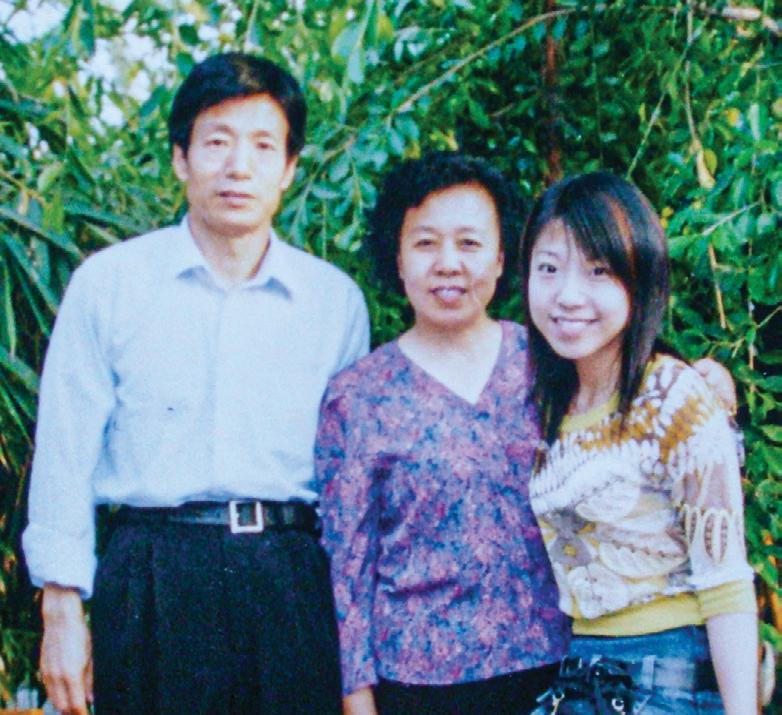
“My mother, a professor and researcher, possesses a strong personality and fearlessness in the face of challenges.
“From a young age, she has been my super mom and an idol in my heart.
“She taught me the importance of self-reflection
when faced with problems, as it allows us to maintain a hopeful outlook.
“She emphasized that while we cannot change others, we can always change ourselves.
“Furthermore, my mother taught me to understand others and not to dwell on those who take advantage of me.
“She explained that if someone only seeks personal gain, they are merely ordinary individuals.
“The true ‘bad’ people are those who harm others without gaining any benefit themselves. Therefore, there is no need to be upset over such individuals. Instead, focus on establishing positive systems and structures to prevent misconduct.”
Ava’s family connection is strong, and she currently lives with her parents, husband, children, and in-laws.
“They share the household chores and take care of the children, lightening my responsibilities. I am

deeply grateful for their support and feel fortunate to have understanding and caring family members.
“The influence of my family has shaped me into the person I am today. Their teachings and examples have instilled in me the values of kindness, perseverance, and personal growth.
“The love and support I receive from my family have been instrumental in my personal and professional achievements. I consider myself extremely lucky to have such a supportive and understanding family.”
With the support of her family, she has been able to pursue a successful career, which began in 2008, after she graduated from the University of Sydney.
She got married and started work in the real estate industry as a sales consultant with a project marketing company, and purchased her first property.

Given her computer science background, moving into real estate development and ultimately home building seems like an unusual career move.
But Ava finds value in helping people find their home, and to build their dreams and wealth.
“At that time, my work provided a great sense of accomplishment,” Ava explains.
“As a fellow immigrant, I understood the importance of finding a home and settling down in Australia. Many recent graduates like myself were venturing into the workforce, striving for financial stability and planning for the future.

“Additionally, numerous young couples were taking their first major step in life, purchasing their first homes and creating a warm haven for their families.
“I was thrilled to be able to offer valuable guidance and assistance to these individuals in their decisionmaking process, which fuelled my passion for my work.”
Her experience in the industry, and her drive to excel, led Ava to found her first project marketing company in 2009, alongside her business partner.
She worked hard in her business and in its fourth year, the approval of the Northwest Railway Line presented her with a new market opportunity — the Greenfield developments in the northwest region.
“This area promised excellent employment prospects and educational facilities, enabling countless families to find affordable homes,” she said.
“With the continuous development of infrastructure and transportation, property values were expected to rise, allowing ordinary families to accumulate tangible wealth while investing in their homes.
“I was filled with excitement.
“However, at that time, the project home market was heavily reliant on traditional retail models, focusing on expensive display homes and walk-in clients.
“This approach did not align with the marketing methods of project marketing. Consequently, I began contemplating the idea of managing my own home builder business.”
In 2012, preparations began and, in 2014, construction commenced on her company Noble Group’s first home. By 2018, the company had surpassed the $10 million insurance mark, establishing themselves as a major builder. In 2019, the company successfully completed more than 50 open jobs. In 2020, their annual project count exceeded 100 homes. In 2021, Ava became a board
member of Chinese Builders Association (CBA), sharing her extensive knowledge of the construction industry with the community. In 2022, she assumed the role of Chairman of the CBA Builder Member Committee, collaborating with fellow builders to enhance professionalism. In March 2023, Noble Home passed the iCIRT rating, earning the status of a certified trustworthy builder.
“In my professional journey, two important aspects have guided me: doing something I love (something I find meaningful) and excelling at it (gaining a sense of achievement),” she said.
“If fortunate enough, these two aspects can align, creating a career worth striving for.”
Ava has found this in her career, and thinks it’s important for business leaders to share their knowledge and mentor others for the benefits of their industry.
“Whether as an Australian Chinese business owner or a female entrepreneur in the building industry, we often need to put in more effort to gain recognition,” Ava said.

“The best way to establish ourselves is by enhancing our professionalism through the use of high-quality products, effective management, and a strong reputation.
“One important aspect of what the Chinese Building
Association (CBA) does is to share success stories and provide comprehensive training and resources, enabling professionals to improve and progress in their respective fields.”
Within the association, Ava has had the opportunity to host or participate in numerous seminars and workshops, sharing her knowledge of the construction industry.
Topics covered include evaluating land quality from an architectural perspective, effective house design, and cost control strategies, among others.
By actively engaging with the CBA, she has been able to contribute to the community by sharing valuable insights and experiences, while also benefiting from the wealth of knowledge and networking opportunities provided by the association.
“The Chinese Building Association serves as a platform for industry professionals to collaborate, learn, and grow together,” she said.

“It has been instrumental in fostering connections, fostering professional development, and promoting excellence within the building industry.
“Being part of this association has not only enhanced my own expertise but has also allowed me to make meaningful contributions to the industry as a whole.”
As well as sharing her knowledge with fellow CBA members, Ava is also continuing to improve her own skills, to ensure she is at the forefront of professional development.
She sees her membership to the Master Builders Association of New South Wales, which she joined at a similar time as she joined the CBA, as vital to achieving this.
“Being a part of the Master Builders Association has provided me with access to a network of experienced professionals and resources that are specifically tailored to the needs of the industry,” she said.
“The association’s commitment to professional development and the continuous improvement of its members has been invaluable in my journey as a builder.
“By actively engaging with the association, I have been able to stay updated on industry trends, regulations, and best practices.
“The Master Builders Association serves as a platform for builders to connect, exchange ideas, and collectively elevate the standards of the building industry.”
In business, Ava is principled and she adheres to some basic tenets to ensure she, and her business, continues to success.
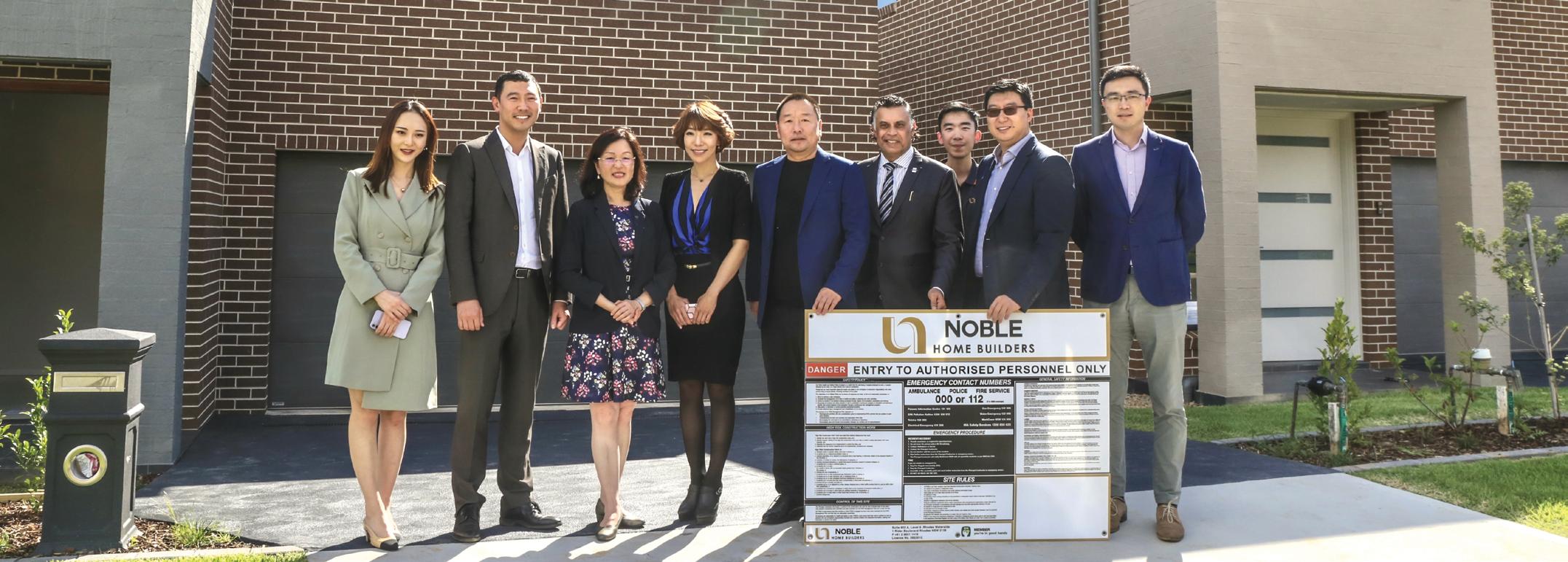
“There are several principles I adhere to:
1. Understanding oneself: Each person has their strengths and weaknesses. It is crucial to know your limits and embrace your differences. As a female in the building industry, I’ve discovered that:
» I excel in starting from the product perspective, leveraging my extensive marketing experience, deep understanding of clients, continuous reflection, and market awareness to constantly improve and adjust our product lines to meet market demands.
» I prioritise a management approach that focuses on nurturing a humane work environment. I view myself as the “mum” of the company, valuing the wellbeing and growth of our team members. The growth of the company stems from the growth of its employees.
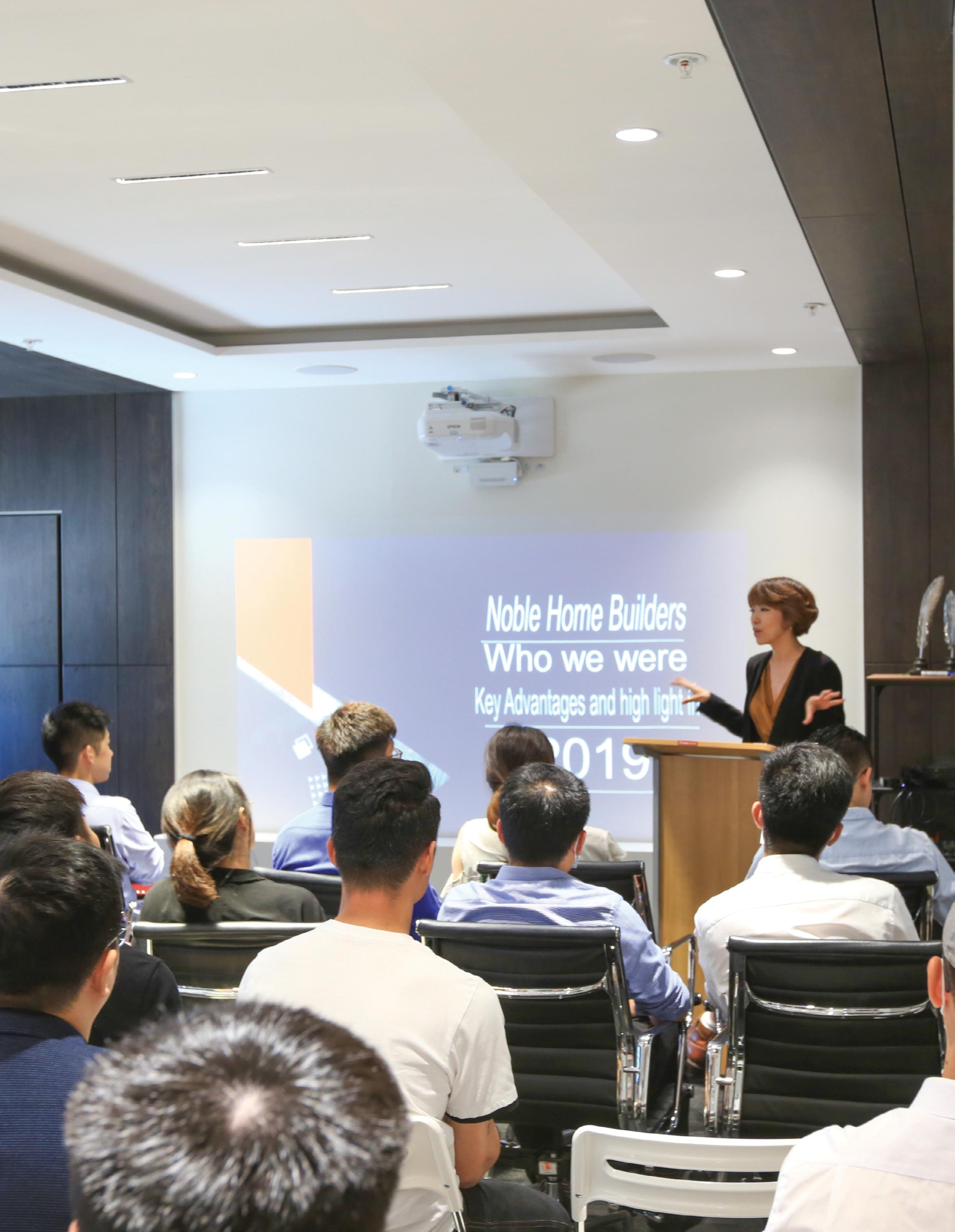
2. Creating a culture you love: Since we spend more time at work than at home, it is essential to cultivate a company culture that resonates with our values. Our company culture embodies:
» Teamwork: I introduced a team bonus system, ensuring equal sharing of team achievements, such as successful contract exchanges, efficient site completion, and positive client reviews.
» Customer focus: Every team member contributes to the overall client experience, from delivering professional sales presentations to transparent communication during the approval stage, conducting satisfying site meetings and handovers, and delivering high-quality products within the specified timeframe.
» Innovation: We hold weekly marketing and product improvement meetings, fostering a culture of continuous improvement and adaptability.
3. Valuing collaborative relationships built on trust and understanding: Whether it’s with partners or employees, mutual understanding and trust form the foundation for successful long-term collaborations. We have worked with more than 20 local land developers and more than 60 local sales companies. Nurturing these relationships requires time, communication, and support. We are not alone in this battle. As women, we excel at understanding others’ perspectives, taking into account the concerns and needs of both parties, rather than solely pursuing our own interests.
4. Surrounding yourself with like-minded individuals who share the same values: For example, our current building GM, Ike, enjoys building homes for families. Finding people you enjoy working with and who share your values creates a harmonious and productive environment.
“These principles inspire and drive me both personally and professionally. They have helped shape my journey in the building industry, allowing me to find fulfilment and make a positive impact in the lives of others.”
The construction industry has been assailed from all angles in recent years, with supply chain constraints, labour shortages and increasing costs pushing many beyond the brink.
One-in-four companies that have entered administration since July 1, 2022 have been construction companies, almost twice the rate of the next most affected industry.
The one shining light for companies who have weathered those challenges has been the healthy pipeline of work stemming from low interest rates and Government-fuelled incentives.
But the good times are drying up.
Data from the Australian Bureau of Statistics show that in May, dwelling approvals were trending down in the ACT (-32.7%), Queensland (-7.6%) and Victoria (-3.9%).
Cost of living pressures are undoubtedly a factor in projects being put aside but there is also hesitation from customers, unwilling to risk seemingly sound building companies going under.
In response, Equifax, an independent regulated ratings agency, developed iCIRT to improve trust, transparency, and ultimately bring back confidence to the construction industry.
iCIRT provides a business with a star rating, with five gold stars being the highest rating available. A business with three gold stars and above is classified
“The methodology centres around six key criteria: Character, Capability, Conduct, Capacity, Capital and Counterparties. We are seeking to understand those businesses that have the capacity, capability, resilience and reliability to deliver good quality built assets,” she said.
Exploring the benefits
Building professionals that secure an iCIRT three gold star or above rating demonstrate strong foundations to financiers, and may also gain a benefit from an insurance perspective, reducing pressure on costs.
There are also benefits for consumers.
When looking to purchase a new home or investment property, buyers often have limited information on which to base decisions. By choosing an iCIRT-rated player, there is greater certainty that they are transacting with reliable and resilient constructors with a track record of doing the right thing.
“The introduction of a star rating system into the residential construction industry aims to give certainty around one of life’s biggest purchase decisions,” Ms Shaw said.
“iCIRT provides prospective buyers with a path to start their journey, comfortable in the knowledge that they will be working with a trustworthy builder or developer that has been listed on the register.

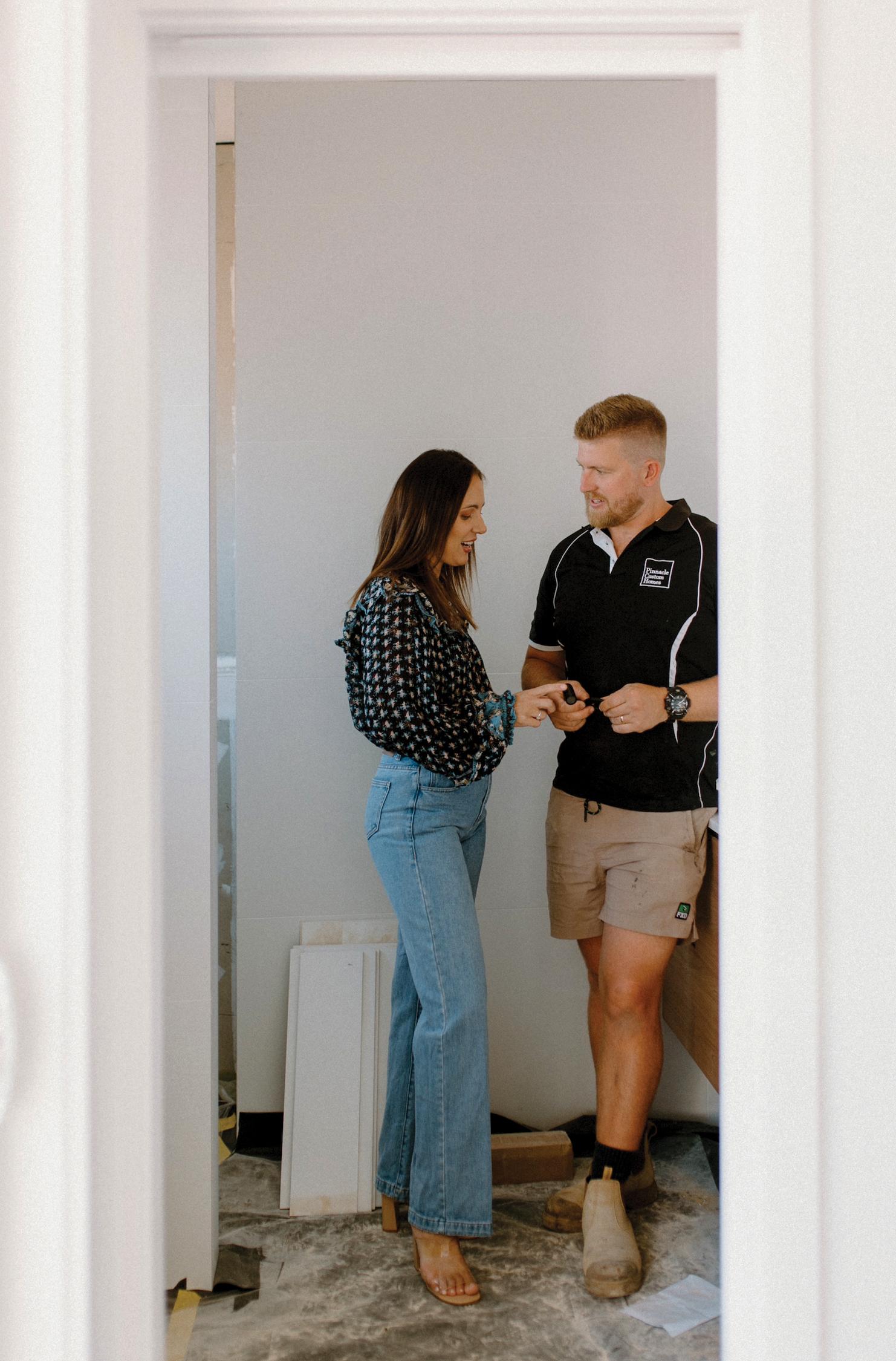
Tell me a bit about yourselves and your family.
April: Mike and I are both 30, and we have three children - Huxley, 5, Florence, 3, and Jarvis, 7 months.
Both Mike and myself (April) were born and bred in Orange, NSW. It is a stunning regional town known for great food and wine.
We both attended local schools but did not meet until the year after we both finished year 12 (2011) when I was studying primary school teaching at university and Mike had started his carpentry apprenticeship.
We dated and travelled for a number of years while completing our training/studies and in 2016 we married. During the year of our wedding we started to build our very first home. Mike did as much on the home as possible to keep the build cost as cheap as possible. Would you believe we were able to build the home for just over $200,000?
I continued working as a primary school teacher and Mike studied to get his builder’s licence.
We had our first son in 2018 and the same year we sold our first home and began building our second home. This has been a pattern that we followed over the years and what got us into becoming builders for clients. A friend approached us after looking through one of our homes and asked if we would build their home. Nervous about the leap we were taking, we said yes. Flash forward and we now build high-end homes for multiple clients a year. It has certainly come with highs and lows but we take all the challenges we have faced as an opportunity to learn and do better.
Do you have hobbies/interests outside of work (either together or separately)?
Mike: We love travelling Australia with our kids and each year try to take them somewhere special. Our most recent trips being Central Australia through the Simpson Desert and Cape York. We also enjoy spending weekends at April’s dad’s property, which is an hour’s drive from where we live.
April: The kids love riding motorbikes, Mike takes them fishing and it is a really nice way to take a break. When we aren’t doing that, we love to eat and drink at all the beautiful food and wine venues that Orange has to offer. We are big foodies.
Tell me about your business, Pinnacle Custom Homes.
April: We are high-end residential builders. We favour design and construct as we both have a passion for design and love being involved with our clients from the very beginning. We also do a bit of architectural work as well. The high-end builds came about from Mike’s extreme attention to detail and perfectionist attitude for the homes that he builds.
Mike: We find that what draws clients to us is the fact that we are a team and April is heavily involved. The wives/girlfriends find it comforting having April (who is super bubbly, easy going and supportive) as the main point of contact throughout the build.

What is it like owning and running your own business with your partner?
April: We love working together. We certainly are each other’s ‘better halves’ in the business and in our personal lives; skills where Mike lacks, I pick up and vice versa. We really are the perfect team. We also
bounce really well off each other and have the same passion for building well-built and beautiful homes.

What is it about being a family business that you enjoy (for both of you)?
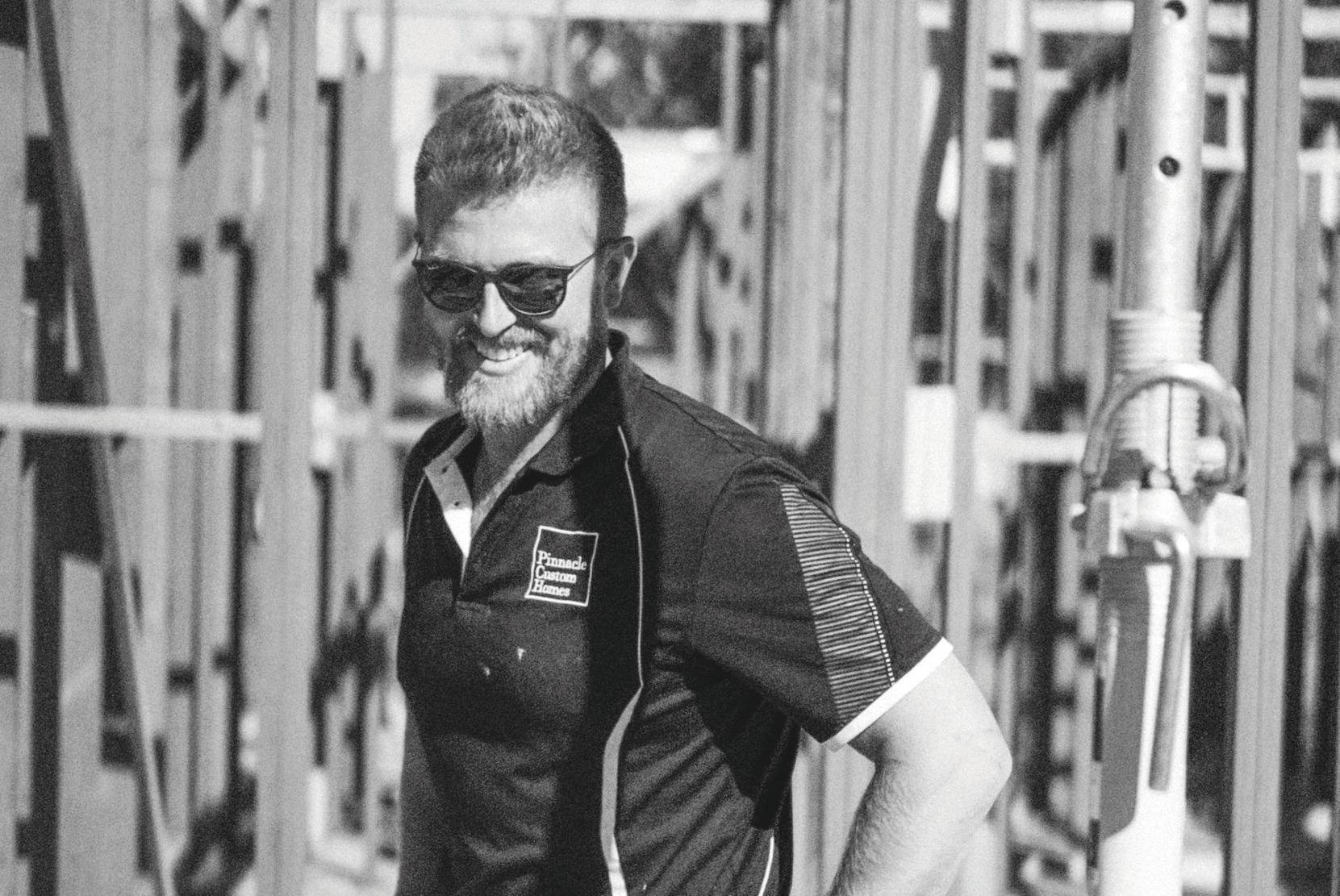
April: When I was teaching, Mike never understood the high and lows of the job or the stresses that came with it. Now that we work in the business together we go through the highs and lows together and we always know exactly what one is feeling because we are in it together. It’s one of the blessings that come with working with your spouse.
What is it about being a family business that you find challenging (for both of you)?
April: The flexibility that allows us to have with our kids. We are working all the time and sometimes at
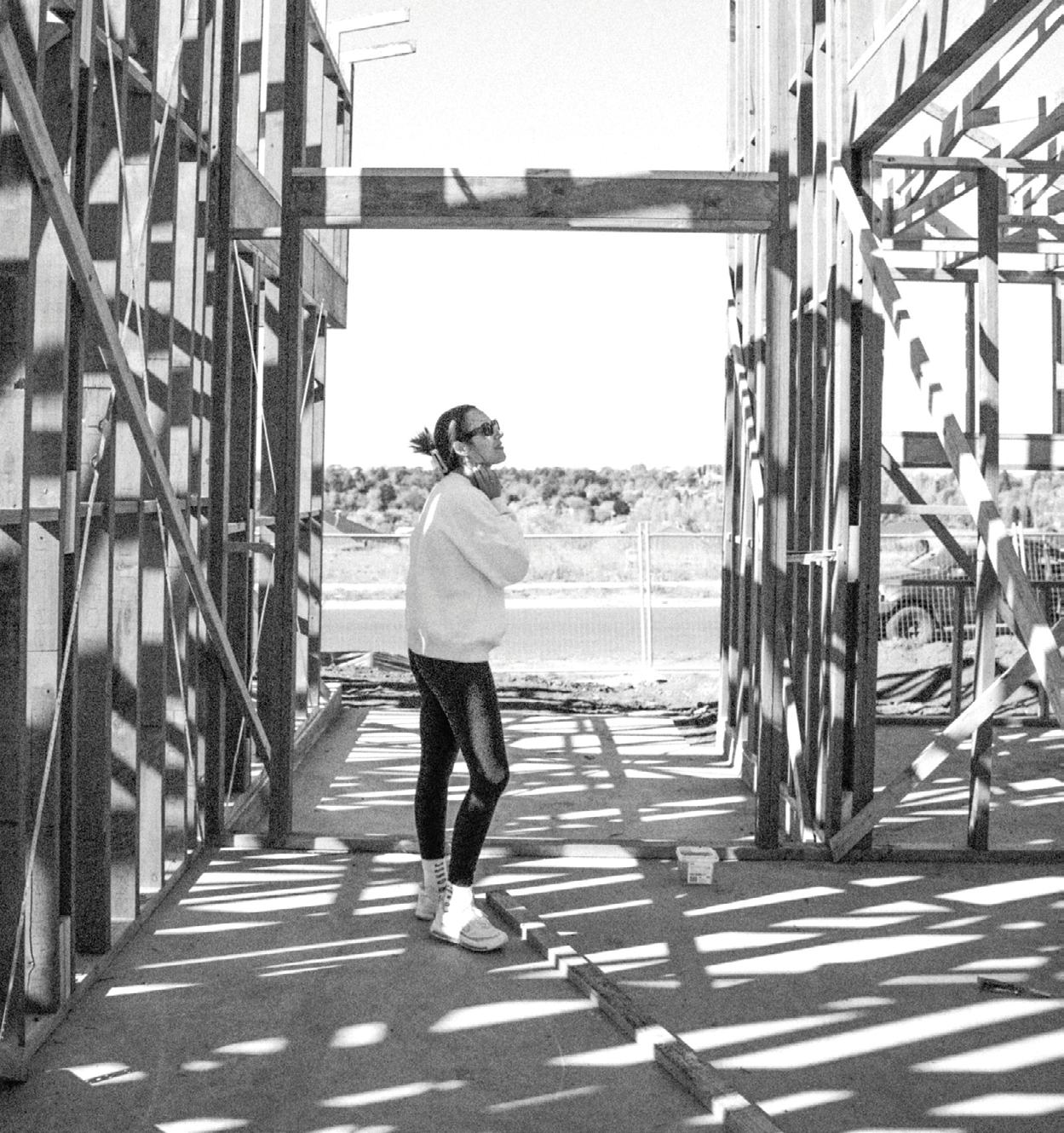
I LOVE DESIGN, LOVE SEEING OUR IDEAS COME TOGETHER. AND I LOVE SUPPORTING OUR CLIENTS THROUGH THEIR BUILD JOURNEY.
crazy hours but it also allows us to be there for our kids when we need too. The kids have such an equal experience with both parents and Mike can be so much more hands-on because of our work situation. It means that kids get dragged to work meetings and site visits and they are familiar with the jobs we do and what Mummy and Daddy do for work.
It does mean that we never get a decent break. For example, when Jarvis was born I was literally in the hospital, in labour, making work phone calls and responding to emails. That is probably the main downside.
What is it about your roles in the business that you enjoy (for both of you)?
April: I LOVE design, love seeing our ideas come together, and I love supporting our clients through their build journey. Building is full of so many ups and downs and I feel their feelings with them.
Mike: I still love being on the tools as much as I can and seeing a pile of dirt become the clients’ dream home!
What is it about your roles in the business that you find challenging (for both of you)?
April: We are a small business with a young family and a mortgage like everyone else and have copped quite a lot of price rises being in fixed price contracts. It is scary when you see so many building companies in the media collapse and it’s so sad to see and you just pray that it won’t happen to you. So I suppose the worry never leaves you, it’s a constant state of worry about meeting deadlines, worry about weather, worry about the workload, worry about
ensuring both the clients and your trades are happy. You can’t switch off, ever, even if you want to. And in building some things are just out of your control.
How do you balance home (family) and work life? Is this hard to achieve?
April: It is so hard. There is always a phone call to take or an email to answer. Our poor children are used to it. I still think we are trying to figure this part out to be honest. We do value balance and feel it is important. Mike is better at prioritising it than I am. In this day we have access to our phones all the time and people expect you to be on call 24/7, so I think having some boundaries in place would be a good start. I am yet to implement that though.
What advice would you like to offer to people in a family business?
April: Ride the wave, there are highs and lows and it is just a part of life. You are always learning and can always be better. Celebrate the wins and always be kind.
What was the best piece of advice you have received?
April: Gosh that is a hard one. I think delegate. If you are not good at something, pay someone who is.
What’s been some of your proudest moments?
April: One of our builds won a National Master Builders Award last year which was such an honour. I was having a baby at the time so we sent the clients but it was so amazing to be recognized for our hard work.

Architect and artist Amanda Izzard tells the rich story of her family’s connection with the building and construction industry in NSW.

Four generations of my family have found great opportunity and rewarding careers in construction. It is an exciting industry to be involved in, especially in Australia as we continue to grow and shape our cities around us.
My grandfather, John Stevens, was a carpenter with great skill and built houses, including his own which still stands in Oatley. I have a plan of his house that he hand drew in 1919.
He served in World War I and upon his return worked for NSW Railways in Eveleigh Works building the railway carriages, which were all timber at the time.
My father, Clive Stevens, recalls my grandfather building the house around him as a child and also grew up with building skills. My father was very creative and decided to become an architect. He left school at 14, like so many of his generation, to help provide for the family in tough times and started work as a draftsman.
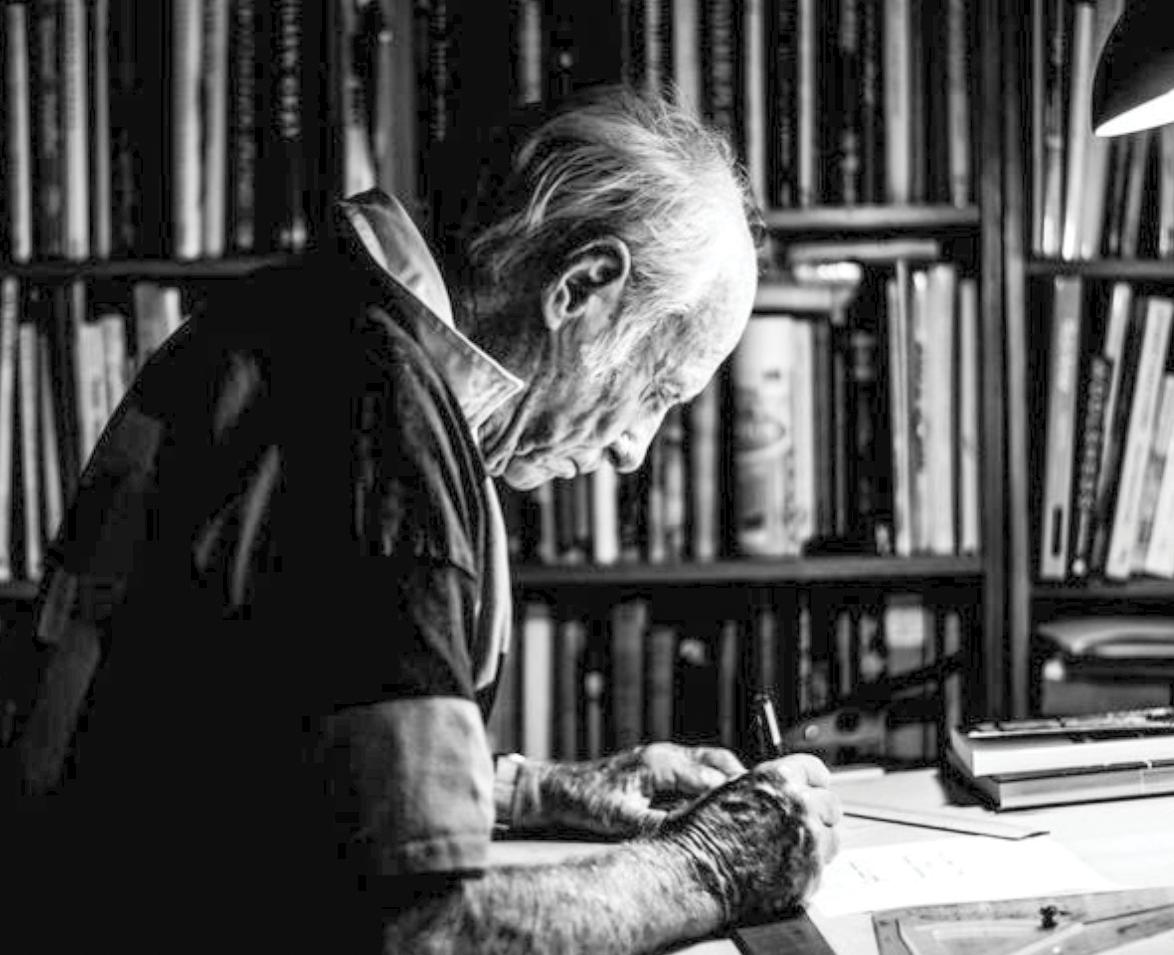
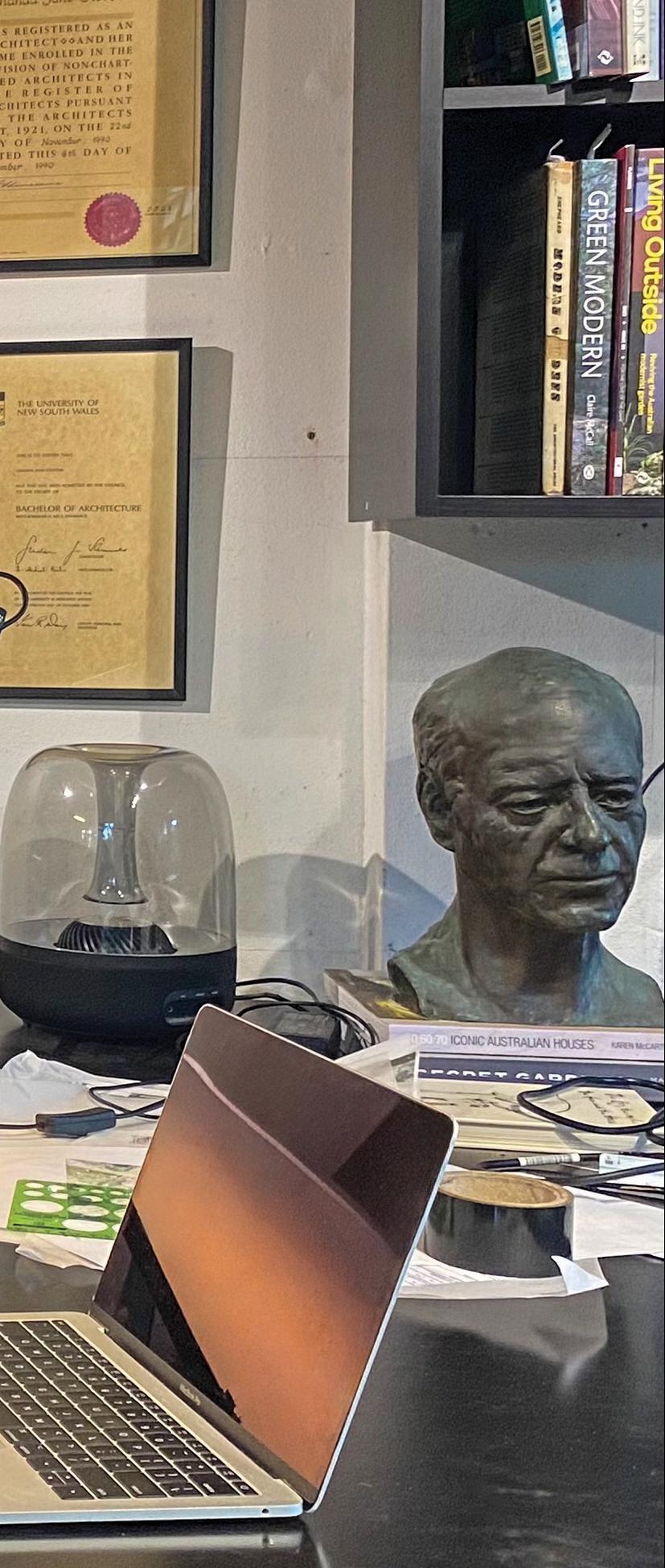
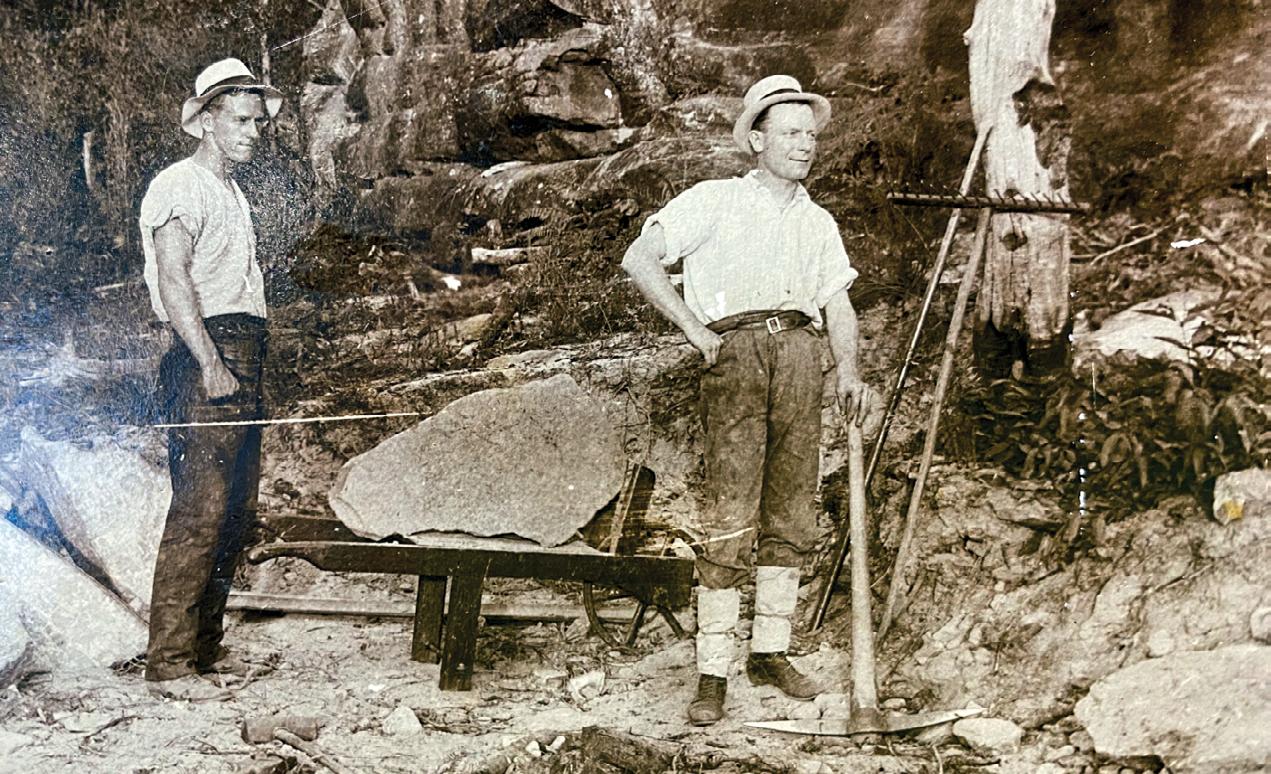
His first job was with Dairy Farmers drawing up the horse drawn carts that would deliver milk to
houses around the suburban streets. He went on to complete his architecture degree at Sydney Technical College, studying at night, and designed many beautiful buildings including churches, Penfolds Wine building (now Ikea at Tempe) and houses such as his iconic mid-century house in Cronulla. He also lectured at the University of NSW for many years.
As a child I was fascinated by my father’s beautiful hand drafting skills as he would draw up plans. He eventually allowed me to colour them in and I was hooked. As children we were also lucky enough to travel overseas and he would explain the principles of design behind beautiful cathedrals and castles in England and the Parthenon in Greece, which really inspired me.
My father also built a couple of our houses himself so I grew up watching and helping him build timber framework and stone walls. It was great to learn practical skills to give you confidence to have a go and the satisfaction of creating useful things. Of course I went on to become an architect too.
After university I worked in London. It is great
that there are opportunities in the construction industry to be able to work overseas, especially with sought-after Australian qualifications. I enjoyed collaborating with people from around the world on large scale architecture projects but after a couple of years was excited to head back to Australia to work in residential design, which I felt had far more exciting opportunity in Australia.
Upon my return I teamed up with my father to create our own architecture business. It was a fantastic opportunity for me, as my father was a hard taskmaster and trained me well and we went on to work for many years designing houses and aged care facilities, winning some design awards

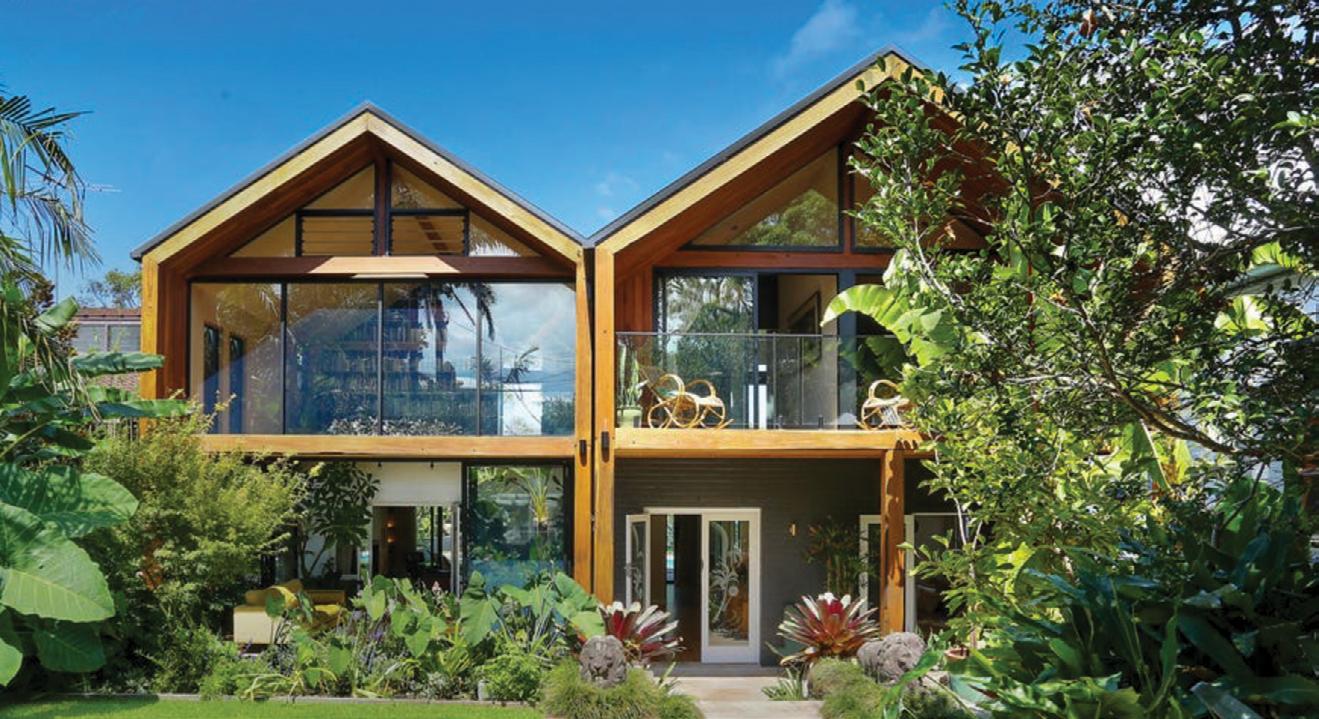
along the way. I also completed a landscape diploma at TAFE as I felt biophyilic design principles were important. That is to design the house and garden as one fluid space, the outside and inside informing the design of each other and nature then becomes the backdrop to living.
Architecture is a very challenging career and allconsuming. You really need to be pretty determined to start with a great end vision for a project and then collaborate with so many stakeholders including the client, council, consultants, suppliers and builders, working together as a good team and driving it to a high standard of completion.
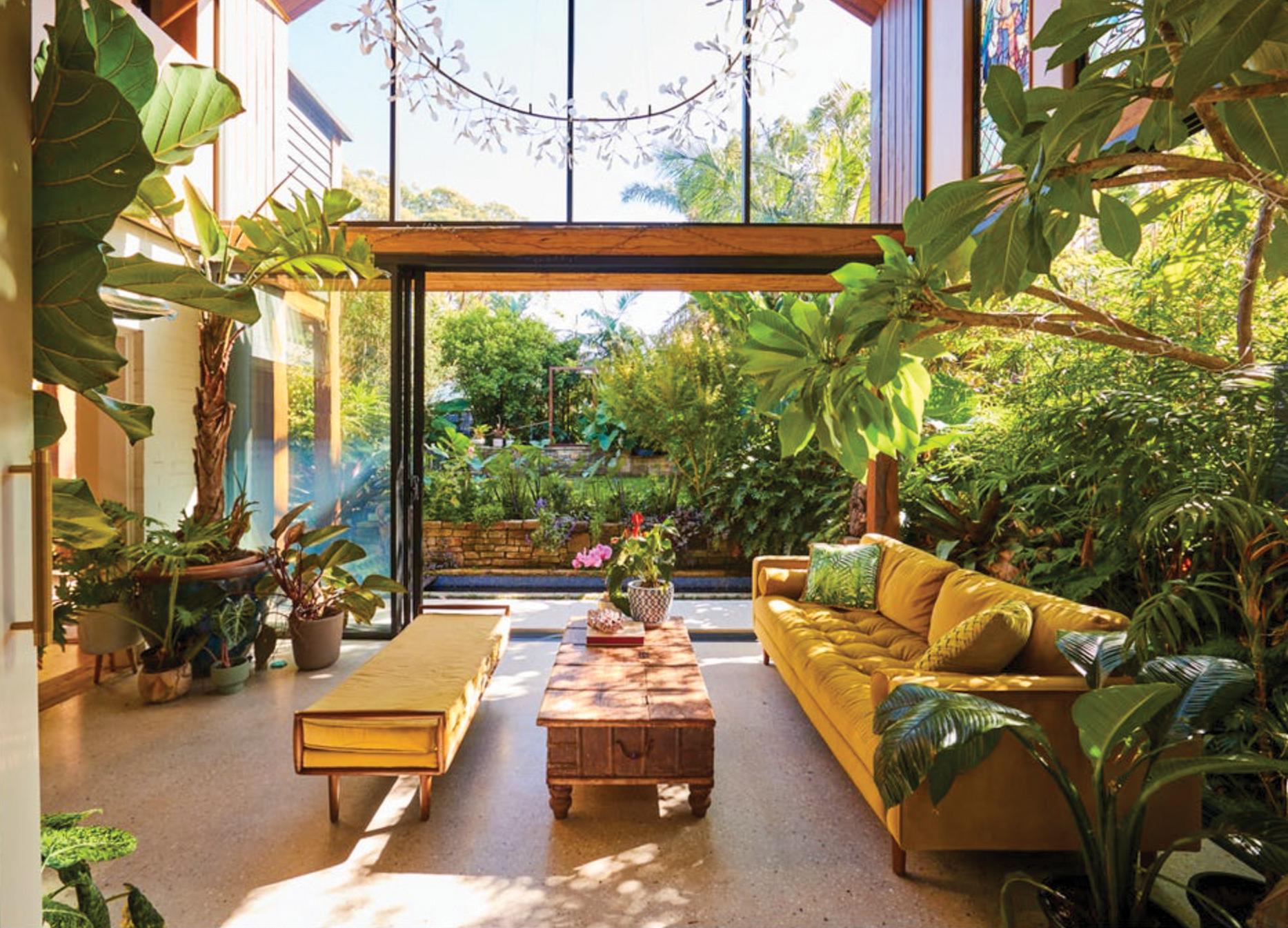
I also find it challenging to convince clients (and council policy) that bigger is not always better and we should concentrate on more beautiful and sustainable houses that are informed by our natural environment. Architecture is also very rewarding when beautiful buildings and spaces are created from nothing but a thought and provide people with well-functioning and uplifting houses to enjoy. As a career it doesn’t get much better than that!
shaping our cities but finds the demands of long hours and tight work schedules challenging. She has since been headhunted by another company.
I also renovated and designed new houses for myself and family, so continuing the family tradition, my children also grew up on building sites. From as young as four weeks of age they would be hoisted into my backpack and accompanied me to site meetings on building sites (not OH&S compliant these days!).
They were also hooked, not only into the excitement of construction but the value of living in welldesigned and constructed buildings to your feeling of well-being. All three entered the building industry.
Zoe, always very organised and a good communicator, studied construction management at university. She took up a cadetship with Built while studying at uni and went on to work with them on large scale projects in Sydney.
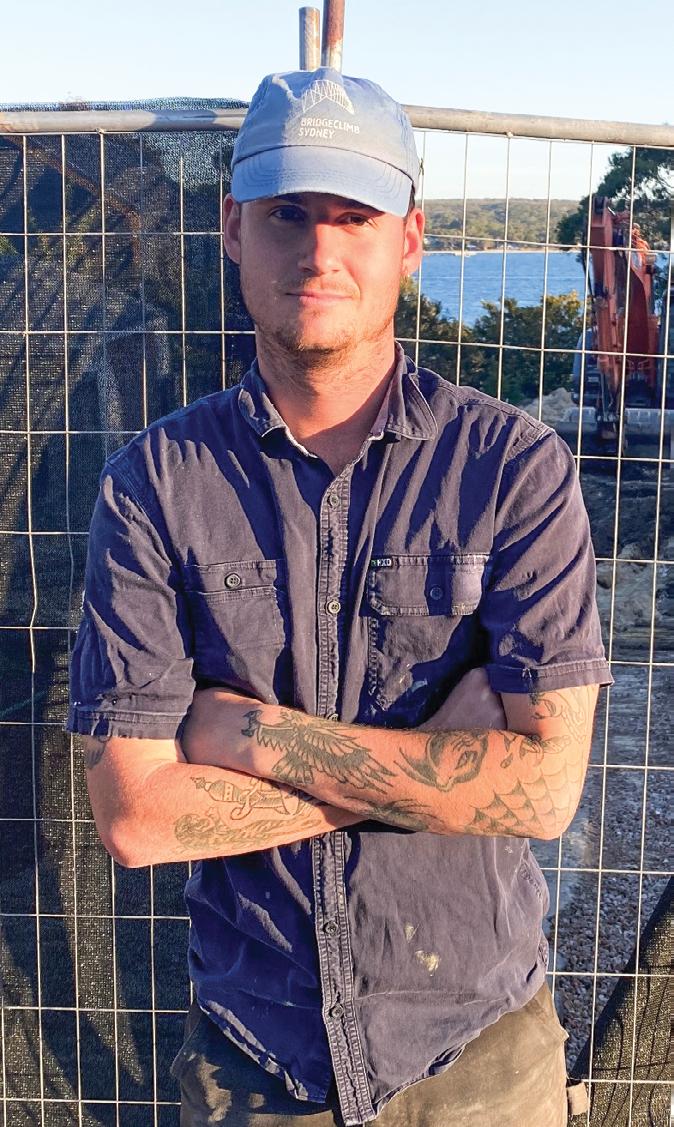
She loves the great career opportunities it offers and excitement of being part of a large team
Xavier followed the more practical route, taking up a carpentry apprenticeship from school. He really enjoys working in a team of good builders and learning great skills to take forward to his own projects in the future. He is also now studying surveying, first through a TAFE diploma and now at university parttime, happy to move away from the physical aspect of construction to a more technical role.
Lili is in her final year studying landscape architecture at Uni NSW. She also has a part-time job with JMD Design offering her great insight into landscape architecture to inform her study.

She is focused on the importance of nature to our sense of wellbeing and the increased role it needs to take in our cities moving to a more sustainable and beautiful environment for living.
She is challenged by the need to educate the public in the importance of our native environment and adopting sustainable practice in design and construction moving forward.
It is fantastic to see more women entering into construction over the generations, to bring a valuable new perspective and approach to building as we move forward to a more sustainable future.

FASCINATED BY MY FATHER’S BEAUTIFUL HAND DRAFTING SKILLS AS HE WOULD DRAW UP PLANS.


Protect your peepers in any conditions. Ugly Fish Safety glasses offer maximum protection in stylish female-friendly frames, backed with a Limited Lifetime Warranty. Available for indoor or outdoor jobs in a range of styles.
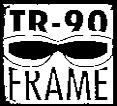





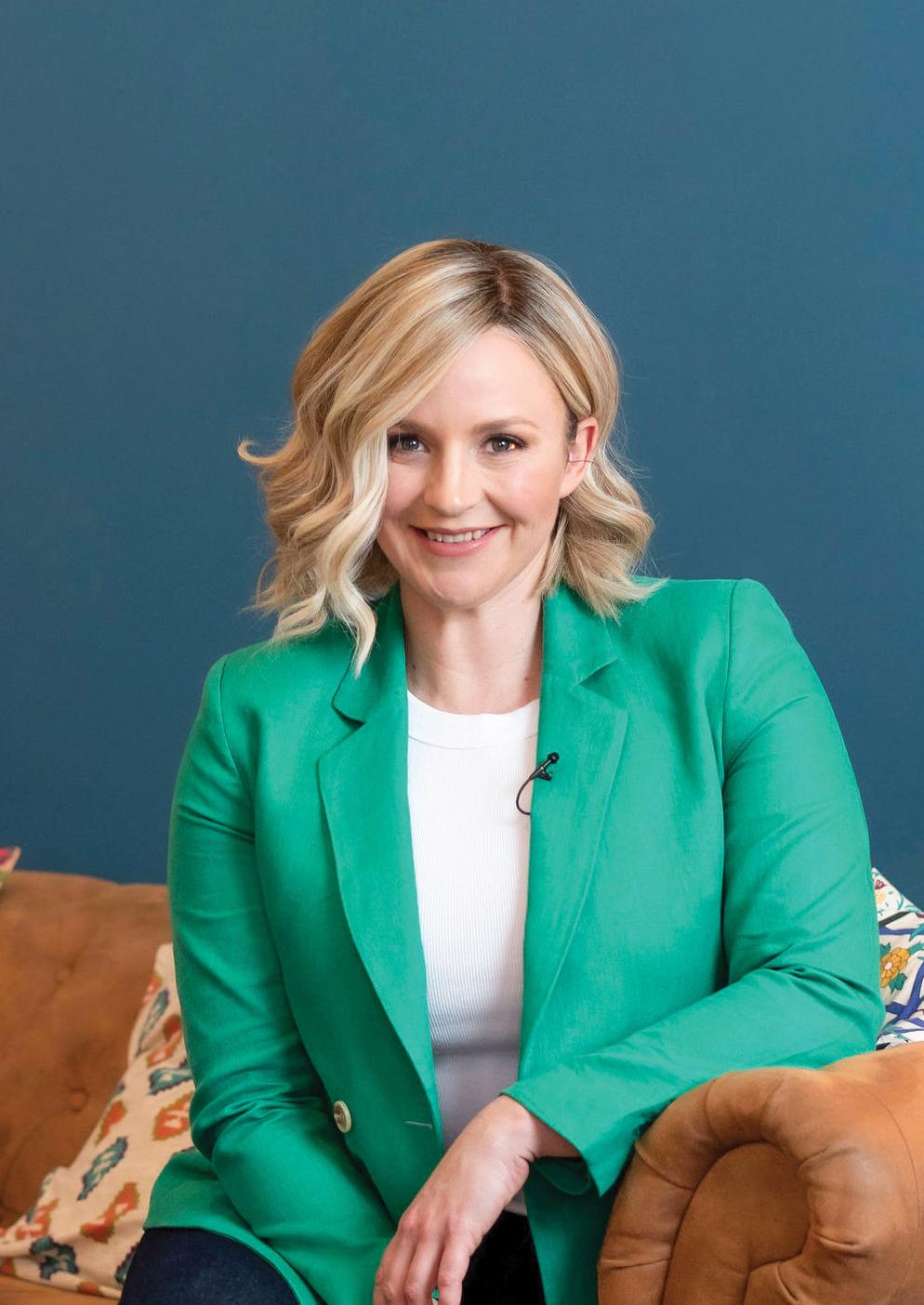
As I walk through the vibrant landscape of Parramatta, it’s here in one of the recently completed skyscraper buildings where I join Amanda Rose for a delightful conversation and a taste of some fabulous local cuisine.
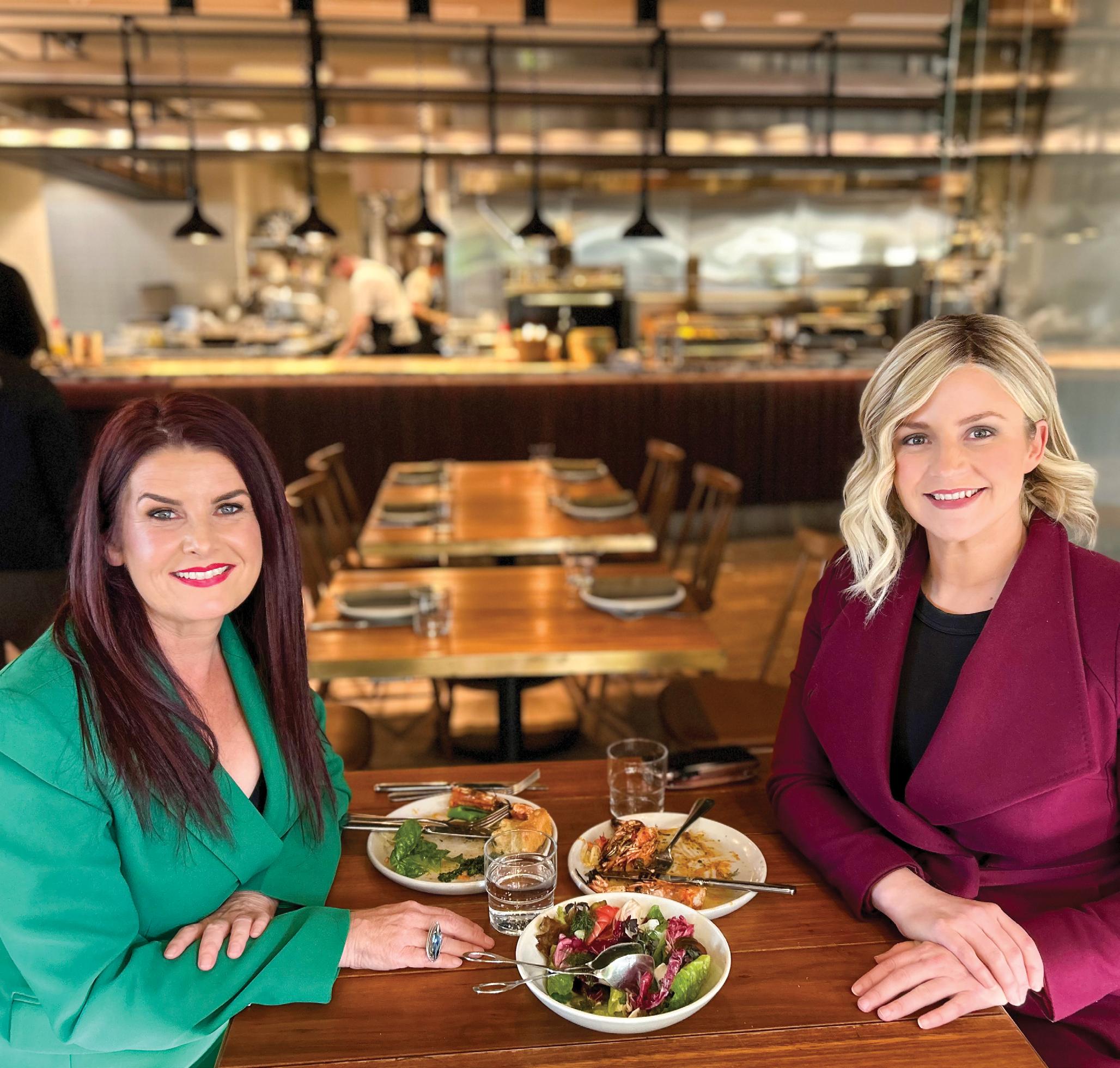
Amanda Rose is founder and CEO of Small Business Women Australia, founder of Business Woman Media and founder of Western Sydney Women, Mentoring Women and The Future is Bright.
As one of the most influential people on LinkedIn, Amanda Rose (#BossLady) is quoted as an “internet winning blogger” by TIME.com and contributes regularly to ABC The Drum and has a weekly spot on Sky News Weekend Edition and Sunrise Hot Topics for the Seven Network.
As we sit here, we delve into various topics and note that Amanda and I share a common background of growing up in Western Sydney, raised in a household with fathers who were tradies who worked in
construction. We discuss how this upbringing ignited our resilience and determination, ultimately laying a foundation for us both to establish and lead our own successful businesses over the years.
In a workplace where gender equality is still a work in progress, we acknowledge that through hard work, dedication, powered by courage and innovative spirit we are changing the game.
Moreover, we are building a legacy of empowerment and inspiration paving the way for future generations of female entrepreneurs in the building and construction industry.
I ask Amanda the following questions:
How did growing up in a tradesman’s household shape your career path?
I understood the importance of the trades in general and I always wanted to help the Tradie succeed hence why my first business was marketing and
graphic design for tradies.
I was always encouraged to be whatever I wanted. There was no glass ceiling in my household. It was always “go for it”.
Do you believe that your upbringing in a tradesman’s household helped you navigate and overcome any obstacles in your career?
Absolutely. I was well equipped to deal with all kinds of people. In fact, I didn’t even experience discrimination or push back until I worked in the corporate world.
Amanda Rose, the founder of Build Your New Career and The Future is Bright in Trades, has created these impressive programs to empower the next generation of women in Western Sydney. These programs provide a supportive environment for women who are interested in learning about construction, STEM, and trades. The Future is
Bright in Trades specifically targets girls in years 9-12, helping them plan for a successful future by building confidence through hands-on learning and mentoring. Additionally, participants have the opportunity to experience a day on the job with partner organizations that host trade experience days.

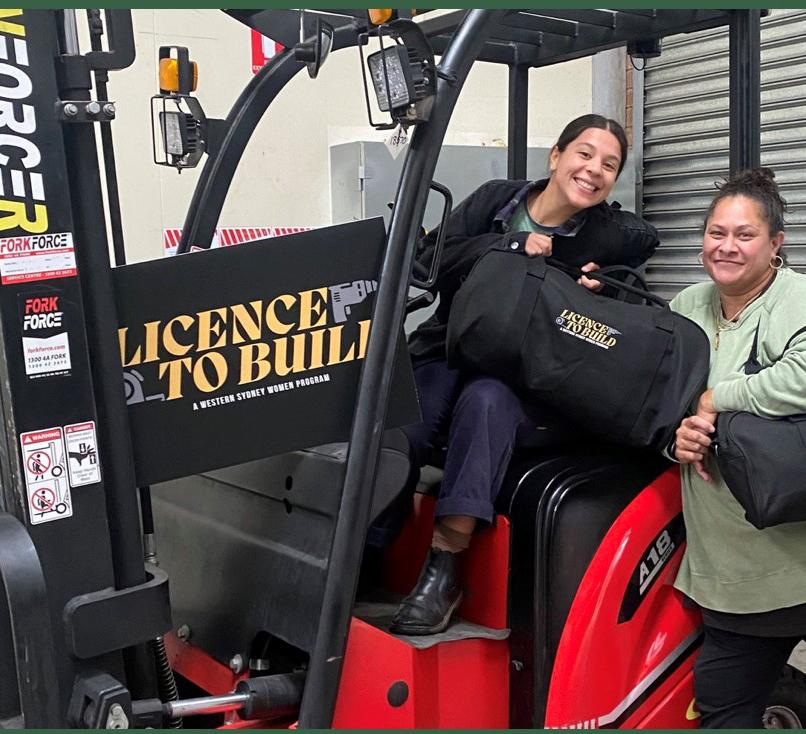

Amanda actively contributes to various organizations and initiatives. She serves as a member of the External Committee for Western Sydney University’s creative leadership degree, as well as a member of the NSW Government’s Council for Women’s Economic Opportunity. Additionally, Amanda dedicates her time as a small business mentor to the Boosting Female Founders initiative, supported by the Australian Government.
Amanda can be seen regularly on popular television shows such as Sunrise hot topics, SkyNews weekend edition, Mike&Emma RnB Fridays, and she is also a frequent guest on ABC’s The Drum.

Patt Gregory was a young girl in the 1960s when she first realised there were inequalities in what her two brothers were allowed, and encouraged, to do and what she was.
Patt was born in Perth, but was brought up on a dairy farm in country Victoria, and while her brothers were encourage to learn how to shoot, go hunting and drive the tractor, when she asked why she couldn’t join in with what looked to a young Patt to be “lots of fun”, she was simply told it was “because I was a girl”.
While she held a fascination with engines and the mechanical side of things - as well as a love for the smell of grease - it was secretarial work Patt learned to do at school. This led her to what she describes as well-paid jobs, which allowed Patt to hitchhike around Europe for a couple of years, broken up with stints working in London.
It was when Patt was working in the UK in the early 1980s as a private detective that she met her husband. It was also around this time that Patt began to seek out more physical work options, as this was something that always appealed to her, and then an ad in the local newspaper caught her eye in the Bristol Evening Post for women’s woodworking evening classes.
“I was surprised to see the classes were held in a woman’s tiny lounge room, complete with a television in one corner and a comfy settee in the other. Despite the unconventional setting, the atmosphere was calm and inviting,” she said.
“We worked with hand tools, and the smell of pine filled the room as the saw bit into the surface and through the wood. I was captivated with the techniques and inspired by the down-to-earth attitude of the women working alongside me. I felt included. It felt achievable.
“Motivated, I enrolled in a government course to be trained as a carpenter joiner, where I learnt everything practical, from roofing to staircasing, to building cabinets and a dovetailed toolbox.”
Patt began her training course with a class of 12 younger lads, and said they were equals.
Her teacher was a retired builder who was extremely knowledgeable and very generous in sharing this experience with his students.
But Patt said even after three weeks, it was obvious that she was struggling with handling tools and mastering the techniques.
“My struggles came when I began working the hand tools: he could only show me what to do. When things didn’t work out for me the way they did for him, he wasn’t able to tell me the nuances of operating the tool, which would help me to work with more accuracy - things that I know well now, like information about my body position and where to distribute my weight when using the tool,” she said.
“My dilemma was that I didn’t know what questions to ask and he wasn’t able to anticipate and address those gaps that I couldn’t grasp.
“I felt inadequate. I felt left behind, and that there was something wrong with my capability.
“After I graduated, I was determined to master the joinery. So, I set up in a shed, during a freezing Bristol winter, with just a kerosene heater and my hand tools.
“I spent hours every day, practicing and carefully noticing and analysing what factors led to my successes.”
And it wasn’t until she unexpectedly found herself teaching women in a government-funded
organisation, that she realised how valuable this experience this would be.
In 1985, Patt was part of setting up a governmentfunded women’s workshop in Bath, UK. The program taught woodwork to unemployed women over the age of 25 years.
Patt said it was an enriching experience indeed, and for over a two year period, she helped many trainees become either teachers themselves or to start their own carpentry business; some of which formed their own groups and offered an all-woman service, while others found jobs in the industry.
In 1988, Patt, her husband and their then-three month old daughter Holly moved back to Melbourne and eventually moved to Mullumbimby, which is where the program Woodwork for Women was born and still run.

The program gives beginners a snapshot of the industry and how they can navigate it and the basic skills and understanding of working with wood.
“So by offering a two-day program I can give them a taste of not only how to design a simple project, create a cutting list and learn hand and power tools to create it, but teach them what to expect when they want to buy their tools and setting them up for success to do that,” she said.
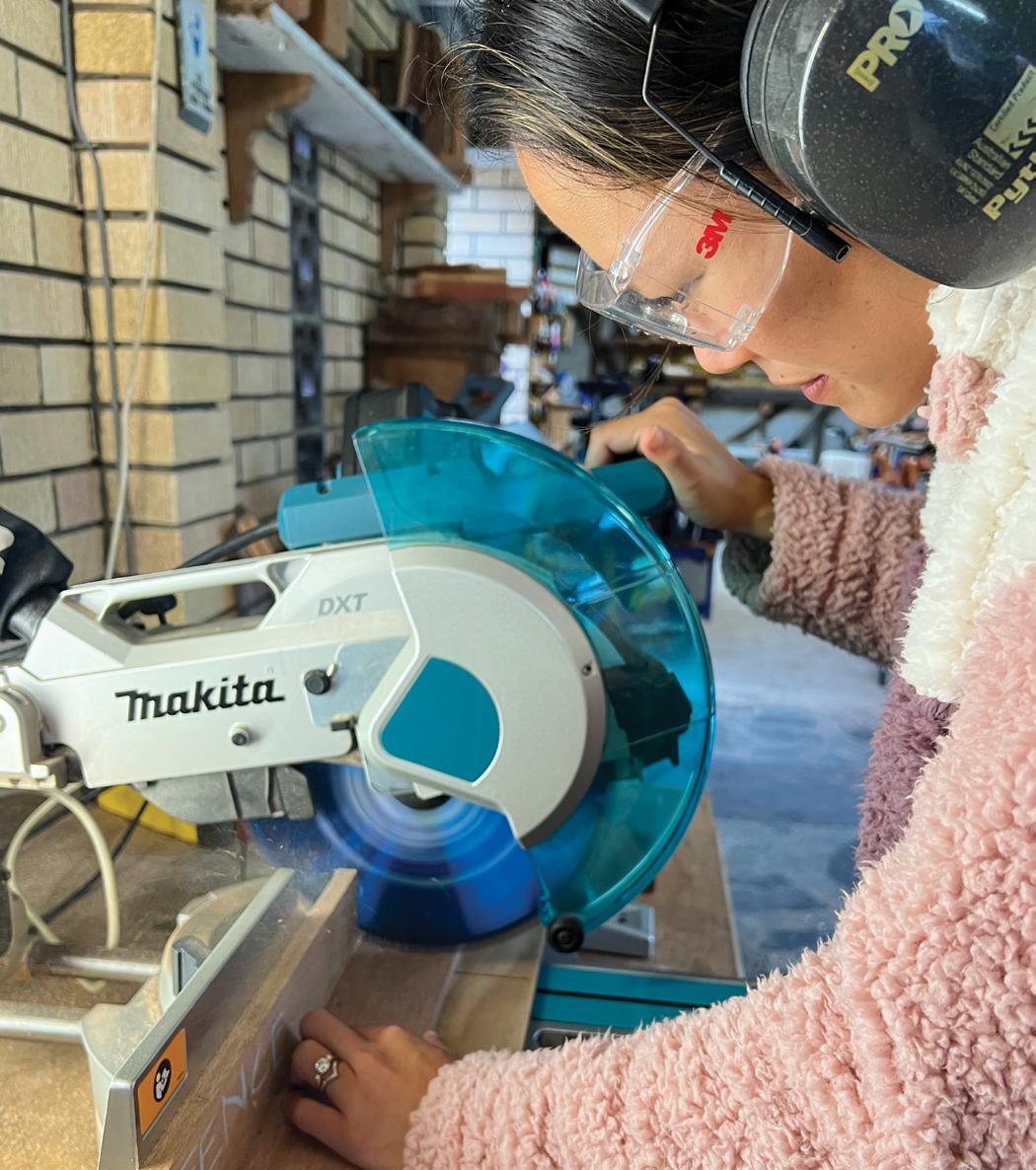
“It’s important to me that my beginners go away from the program with a snapshot of the industry and how they can navigate anywhere within it, by asking the right questions and having the expectation to be treated well and taken seriously. And to do their homework of learning some of the language; for
example, simply speaking in metres and millimetres and not centimetres - small stuff like that goes a long way in a hardware shop.
“When a young woman completes my workshop and is inspired to get an apprenticeship, I’m ecstatic that there’s another woman going to be out there in the trade.
“When a woman goes home from my workshop and teaches her children or neighbour how to use tools or how to bang in a nail, I’m thrilled.
“I feel pleased that I contribute to breaking stereotypes and promoting gender equality in a small but meaningful way.
“When I offer a platform for women to express themselves freely and explore their talents, it’s always inspiring to see their creativity, ideas and unique contributions.
“I often laugh and say ‘Women don’t know what’s impossible when it comes to woodwork!’
“I’m inspired to connect women with each other, encourage collaboration and provide a space for that; knowing that future generations may be impacted by teaching women is satisfying to realise.
“Sharing knowledge and skills with women can have a ripple effect as they pass on their learnings to their families and friends and communities.
“Arming women, even in the smallest and subtlest of ways, with innovating ways to overcome obstacles present in the industry, is hopeful and satisfying.”
• Introduction to timber - Students watch a video to learn about the properties and characteristics of timber.
• Designing a small piece of furniture - Students learn how to design furniture quickly and simply and create a cutting list to determine the required amount of wood.
• Choosing timber at the hardware shop - Students are taught what to look for when selecting timber.
• Accurate measuring and marking - Students learn how to measure and mark wood accurately.
• Hand sawing techniques - Students learn how to saw wood accurately by hand.

• Introduction to chisel use - Students make their first joint using a chisel.

• Introduction to power tools - Students are introduced to tools such as the mitre saw, drill press, and nail gun.

• Drilling and screwing techniques - Students learn important tips about the drill itself and tricks for drilling and using screws effectively.
• Independence and practical skills - Students gain the ability to work independently at home, applying the principles and basics they have learned.
• Final outcome - Students take home their selfdesigned, sanded, and handmade piece, while also having the knowledge and skills to apply in future projects.

Patt believes women bring a unique perspective to the industry and bring quiet support to each other, and that women and men can draw strength from one another and work cooperatively to the benefit of all and the industry.
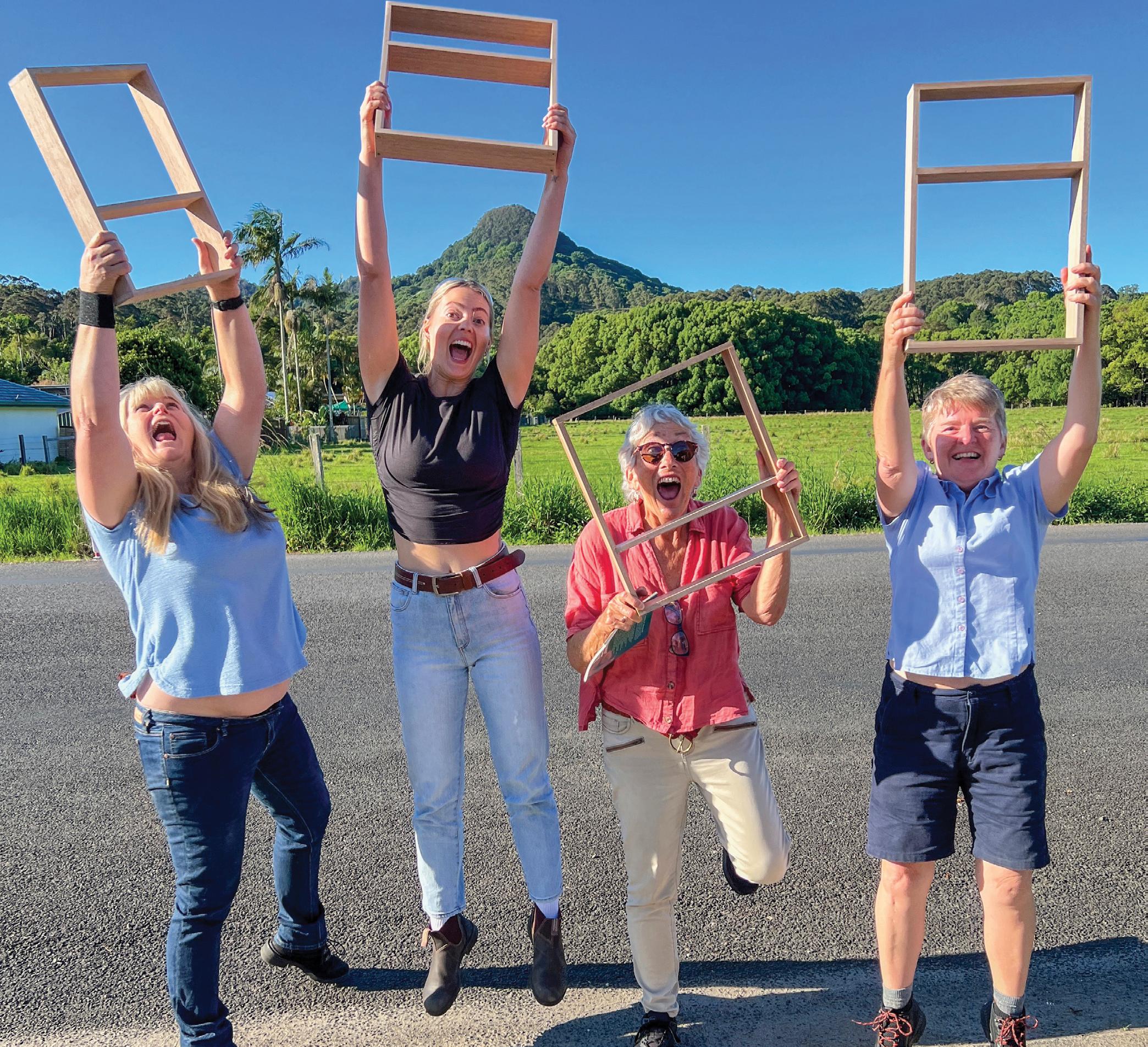
She said she believes women are the great managers of life and either upfront or behind the scenes, they are there, quietly supporting each other.
“Women bring unique perspectives, creativity and simple design awareness (one tiny example - the woman who tells the carpenter she doesn’t want a lip on the pantry shelf because it will make it harder to clean),” she said.
“I believe women bring strong communication skills and an inclusive approach to the workplace.”
“And men can benefit from these skills by actively engaging in open communication and being open to collaboration.
“Women have a great eye for detail and are often sticklers for following rules especially when it comes
to safety.
“Men’s physical strength and stamina can tend to be an advantage when there’s heavy lifting of physically demanding aspects of the industry. Women are often recognized for their reputation of being careful and diligent and taking better care of heavy machinery, trucks and equipment.
“I think women excel in leadership roles bringing emotional intelligence, empathy and intuitive skills.
“Men can learn from and take on these leadership qualities to create more harmony and inclusivity in the workplace.
“Women are adaptable and resilient in their unique ways, and excel in multitasking and effectively manage priorities.
“I would encourage a woman wanting to enter the field, to choose their employer carefully and not to be afraid to delve into their background, and ask lots of questions before taking the job. And don’t be afraid to leave if you need.”

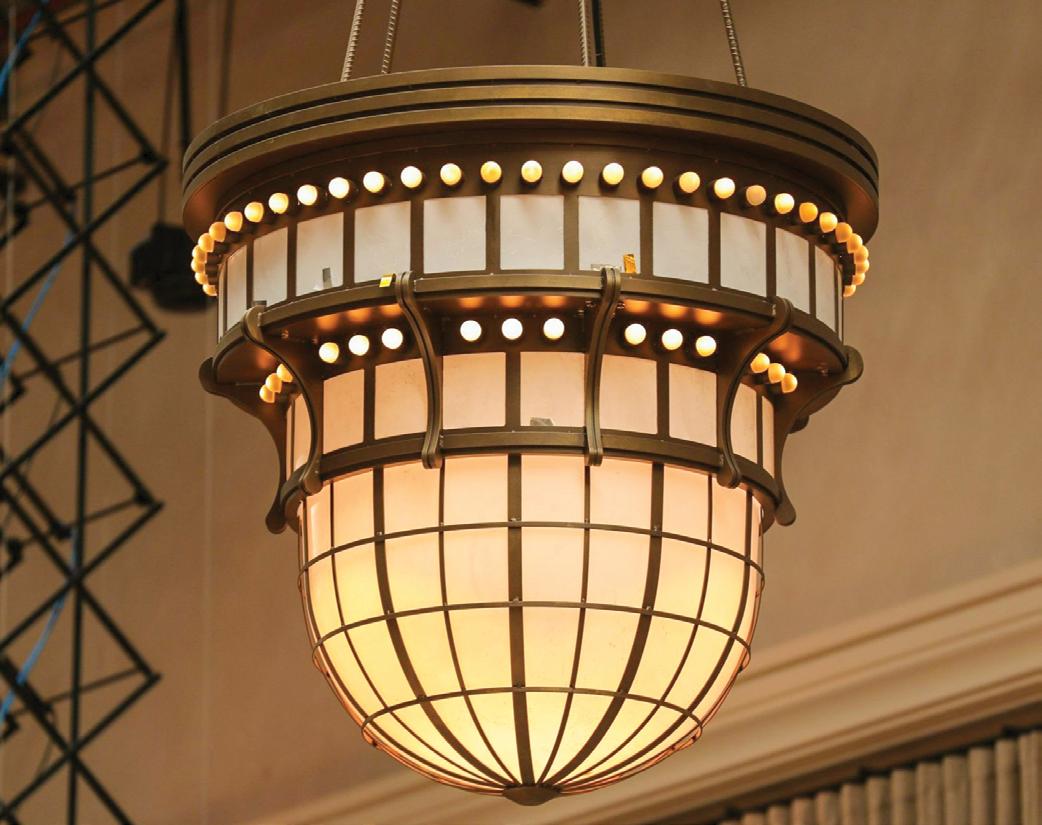


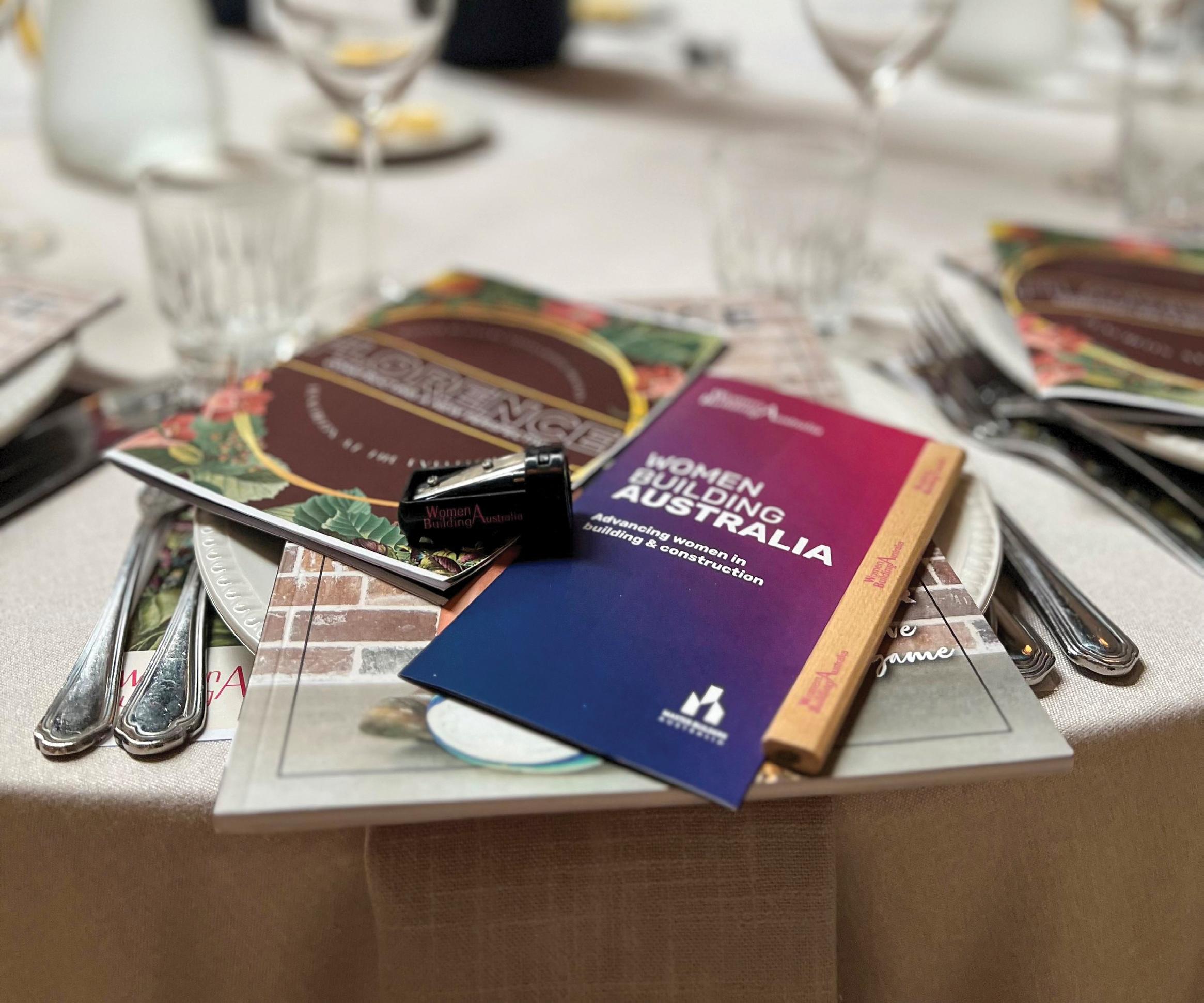
On Friday, April 28, 2023, the Master Builders Association of NSW (MBA NSW) hosted the Florence Luncheon, with more than 240 guests attending the event.

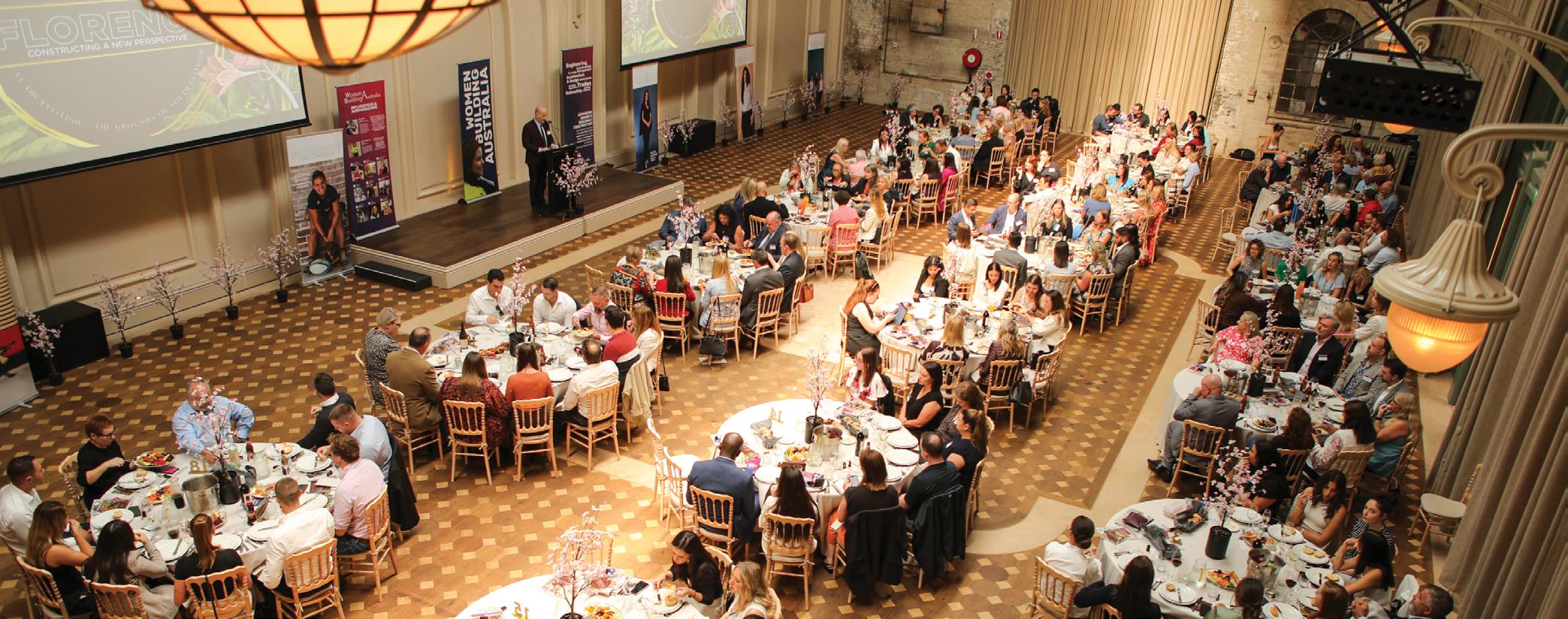
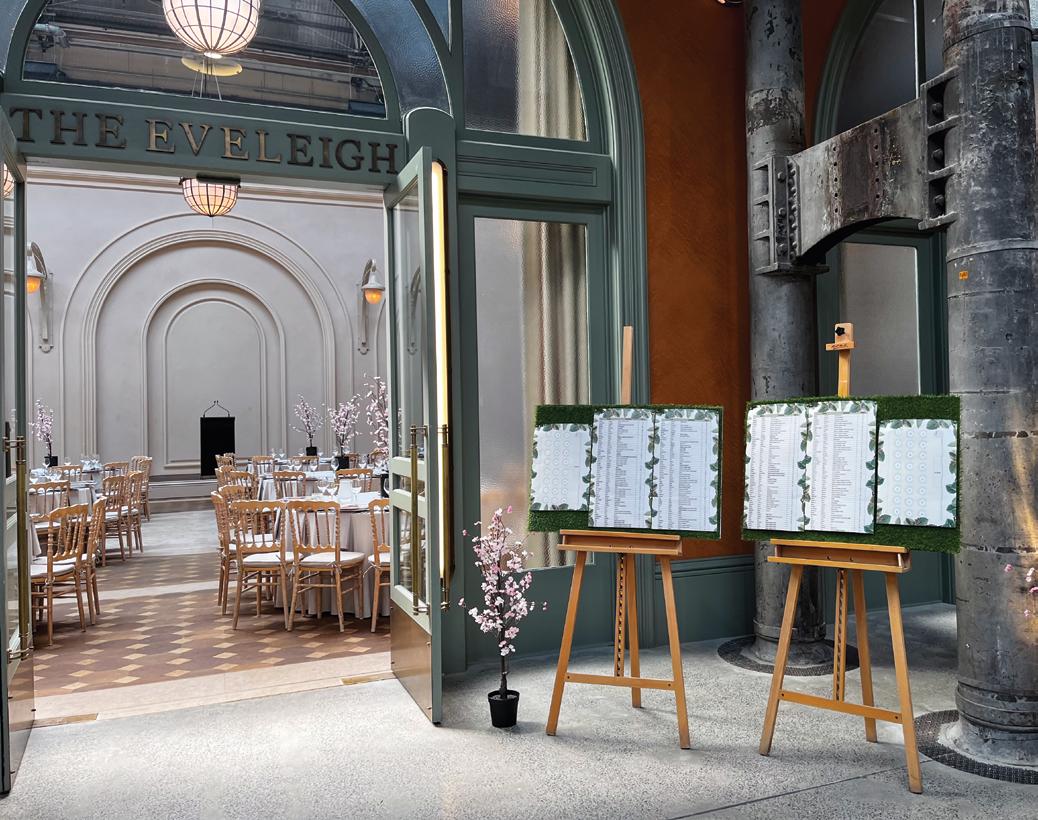
MBA NSW awards and events manager Amanda Kelly gave the audience a historical overview of Florence and outlined the magazine’s purpose.
The name Florence refers to Florence Mary Taylor, who was born in 1879 and was a prominent advocate in Australia’s architectural, building and town planning worlds.
Florence was Australia’s first professionally qualified practising female architect. She was the first woman in Australia to qualify as an engineer and the first woman to fly in a glider. She was a long-time town planning advocate, an influential technical journalist and editor, a successful commercial publisher, a passionate advocate for free enterprise and a prominent socialite. Florence also published the MBA’s official mouthpiece, Building Magazine, for decades.
Master Builders Australia and Women Building Australia CEO Denita Wawn provided some statistics and updates about the increasing number of women in the construction industry and the progress made, including the ongoing programs implemented by Master Builders to encourage more women to enter the traditionally male-dominated industry.
Denita pointed out, “Women are the solution to the skills and labour shortage the construction industry faces.”
Guest speaker Lisa Greenberg shared her story of overcoming alcoholism and rising from rock bottom. Lisa’s inspiring journey to succeed was profoundly moving and empowering, touching the guests who attended.
Lisa’s “10 happiness hacks” were practical tips for bringing joy and positivity into daily life.
Master Builders NSW and Women Building Australia are committed to supporting women in construction, building, and trades and will continue championing the cause.
When it comes to maintaining energy levels, concentration and overall wellbeing, a simple and nutritious packed lunch goes a long way.
Packing a nutritious lunch comes with its own unique considerations for women in the construction industry. Whether they’re on the tools or in the office, they need adequate energy to combat the physical and emotional challenges of the job, while keeping things simple and portable enough to pack daily.
Women have a tendency to under-fuel, whether it be intentionally or unintentionally, believes accredited practising dietitian and advanced sports dietitian Chloe McLeod.
“And if in a physical job working in construction, demands will be higher,” Chloe says. “Having nutritious meal and snack options available is another key consideration.”
Chloe, who is also the founder of virtual dietician practice Verde Nutrition Co, says another key challenge for those in the industry is resisting the temptation to buy highly processed fast foods from takeaway vendors or service stations.
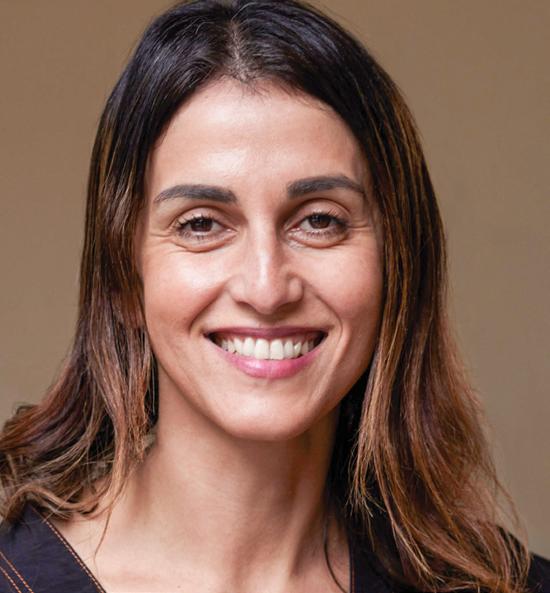
“Regular intake of these can negatively impact physical performance and emotional wellbeing.”
Similarly, those behind the desk sometimes have greater access to vending machines or snack jars rather than whole foods that will actually benefit employee
“Over-caffeinating is something we see often for women working in construction, whether that be in the office or on the tools, due to poor energy levels,” Chloe believes. “This can then backfire, especially if consuming caffeine for an afternoon pick-me-up, as it will likely negatively impact sleep that night – it’s a vicious cycle.”
Instead, packing a fast, healthy lunch and ample snacks to get you through the day will help stave off those fast food and caffeine cravings, while saving the purse pocket, too.
Clinical dietitian and exercise physiologist Kate Save agrees that sugary treats, while sometimes convenient and comforting, are counterproductive to the emotional and physical demands of the job.
“Whether you’re feeling tired, stressed or moody (or a mix of all three), food can have an immense impact,” Kate says, who is also the CEO and co-founder of dietitian and doctor-designed meal provider, Be Fit Food.
“While opting for a pie break is a quick fix, it’s important to ensure the food you consume will support you now and into the rest of the day.”
Kate encourages incorporating protein and wholegrain-rich complex carbohydrates into lunches for sustained energy.
“Prepare your meals in advance,” Kate urges. “If you’re anything like me, first thing in the morning certainly isn’t a time to be making big decisions, and I count my lunch as a big decision.”
Kate recommends cooking larger portions of meals and storing the leftovers in individual containers.
“This allows you to have ready-to-go meals for a few days, reducing the need for daily preparation.”

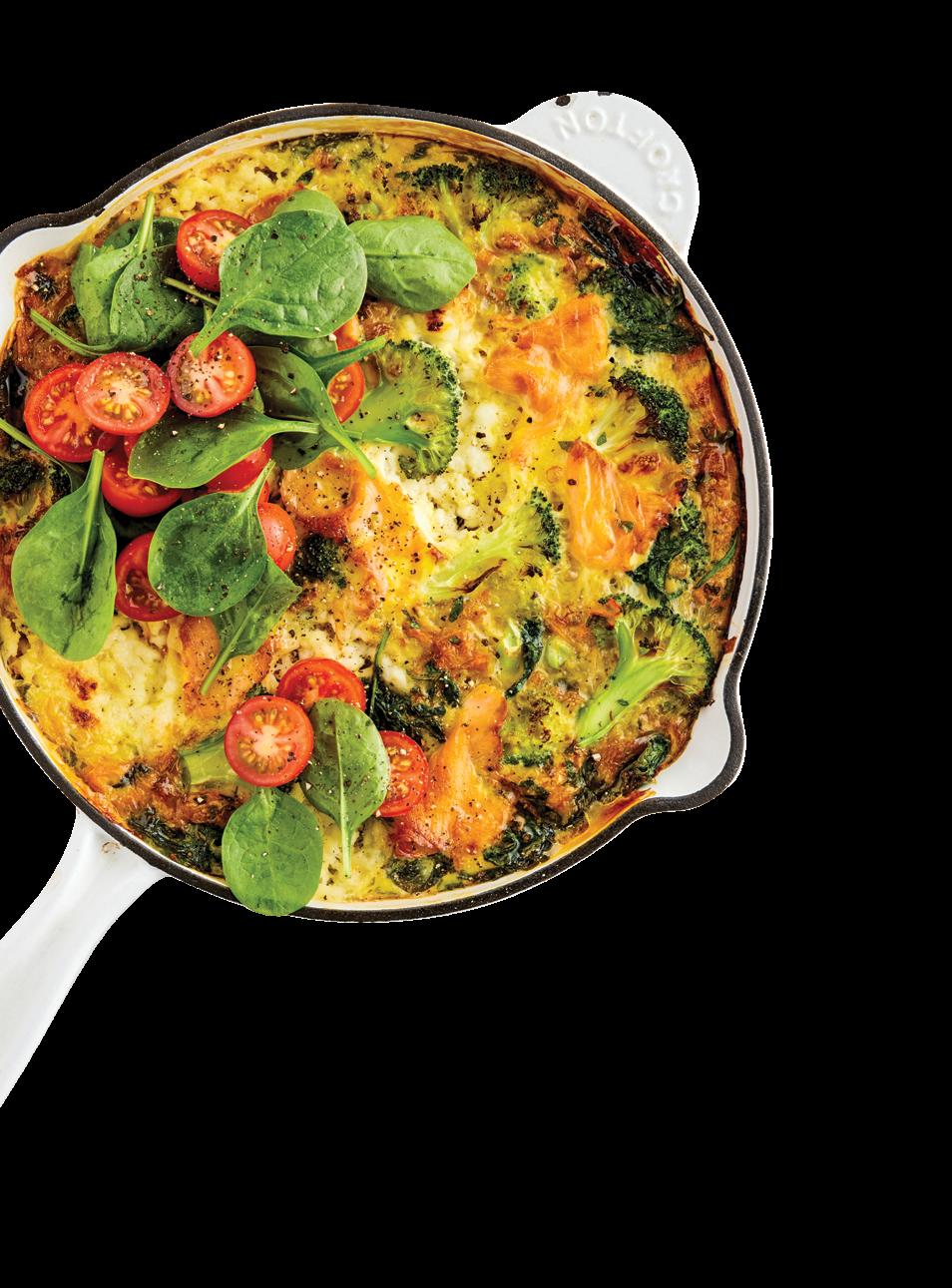



Both Chloe and Kate agree that staying well hydrated is equally paramount, particularly working outside in the warmer months, in order to preserve energy levels and concentration.
“Ensuring lunch breaks are available and taken, and utilising them to get a sunshine walk in, can also be so beneficial,” Chloe adds.
10m prep; 1 serving
By Chrissy Freer for TasteIngredients
50g (1 ⁄4 cup) wholemeal couscous
60ml (1 ⁄4 cup) boiling water
2 tsp fresh lime juice
2 tsp white balsamic condiment
70g can red kidney beans, undrained
75g cherry tomatoes, halved
1 carrot, peeled, shredded
20g feta, crumbled
25g mixed salad leaves
Method
1 Combine couscous and boiling water in a small heatproof bowl. Cover. Set aside for 3-4 minutes to absorb. Fluff with a fork.
2 Combine lime juice and balsamic in a 500ml (2 cup) glass jar (with a tight-fitting lid if transporting). Top with couscous, beans, tomato, carrot, feta and salad leaves.
20m prep; 50m cook; 6 servings
By Chrissy Freer for TasteIngredients
1 tbsp extra virgin olive oil
1 red onion, finely chopped
300g sweet potato, peeled, coarsely grated
250g broccoli, cut into florets
9 eggs
2 tbsp chopped fresh continental parsley leaves
150g baby spinach
250g (1 cup) reduced-fat cottage cheese
75g smoked salmon slices, chopped
250g cherry tomatoes, halved
Method
1 Preheat oven to 180C/160C fan forced. Heat oil in a large ovenproof frying pan over medium heat. Add onion. Cook, stirring, for 3-4 minutes or until it begins to soften. Add sweet potato. Stir for five minutes or until sweet potato is just tender. Set aside in pan to cool slightly.
2 Meanwhile, cook the broccoli in a steamer basket over a saucepan of boiling water for 2-3 minutes or until tender. Refresh under cold running water. Drain well then coarsely chop.
3 Whisk together eggs and parsley in a large bowl. Add to sweet potato mixture in frying pan. Stir in broccoli and most of the spinach. Top with cheese and salmon. Season with pepper.
4 Bake for 30-40 minutes or until golden, puffed and firm when lightly touched. Set aside for five minutes to cool slightly. Top with tomato and remaining spinach. Season and serve hot or cold.
15m prep; 30m cook; 5 servings
By Chrissy Freer for Taste1 tbsp extra virgin olive oil
2 large carrots, peeled, thinly sliced
2 large celery sticks, thinly sliced
1 brown onion, finely chopped
2 garlic cloves, crushed
2 tsp finely grated fresh ginger
500g chicken thigh fillets, trimmed, thinly sliced
750ml (3 cups) salt-reduced chicken stock
80g dried wholemeal spaghetti pasta, broken in half
150g broccoli, cut into small florets, large stem peeled, thinly sliced
145g (1 cup) frozen corn kernels
1 zucchini, halved lengthways, thinly sliced crossways
Chopped fresh continental parsley leaves to serve
Grated lemon rind to serve
Method
1 Heat oil in a large saucepan over medium heat. Add the carrot, celery and onion. Cook, stirring, for 6-7 minutes or until softened. Add garlic and ginger. Cook, stirring, for one minute or until aromatic. Add chicken. Cook, stirring, for 3-4 minutes or until browned.
2 Add the stock and 500ml (2 cups) water. Bring to the boil. Add the spaghetti and bring to a simmer. Partially cover. Cook for 10 minutes or until spaghetti is al dente. Add the broccoli, corn and zucchini. Cook for five minutes or until tender.
3 Divide soup among serving bowls. Top with parsley and lemon rind. Season with pepper.

10m prep; makes 18
By Michelle Southan for TasteIngredients
210g fresh medjool dates, pitted
160g (1 cup) natural almonds
2 tbsp coconut oil, melted
2 tbsp raw cacao powder
1 tbsp maple syrup
1 tbsp chia seeds
1/2 tsp ground cinnamon
30g (1/4 cup) almond meal
Method
1 Place the dates, almonds, oil, cacao, maple syrup, chia seeds and cinnamon in a food processor and process until the mixture is well combined and sticks together.
2 Place the almond meal on a plate. Line a shallow airtight container with baking paper. Roll tablespoonfuls of the date mixture into balls then roll in the almond meal to lightly coat. Transfer to prepared container. Place in the fridge for one hour to chill then serve.
Meet some incredible women powering on in the industry
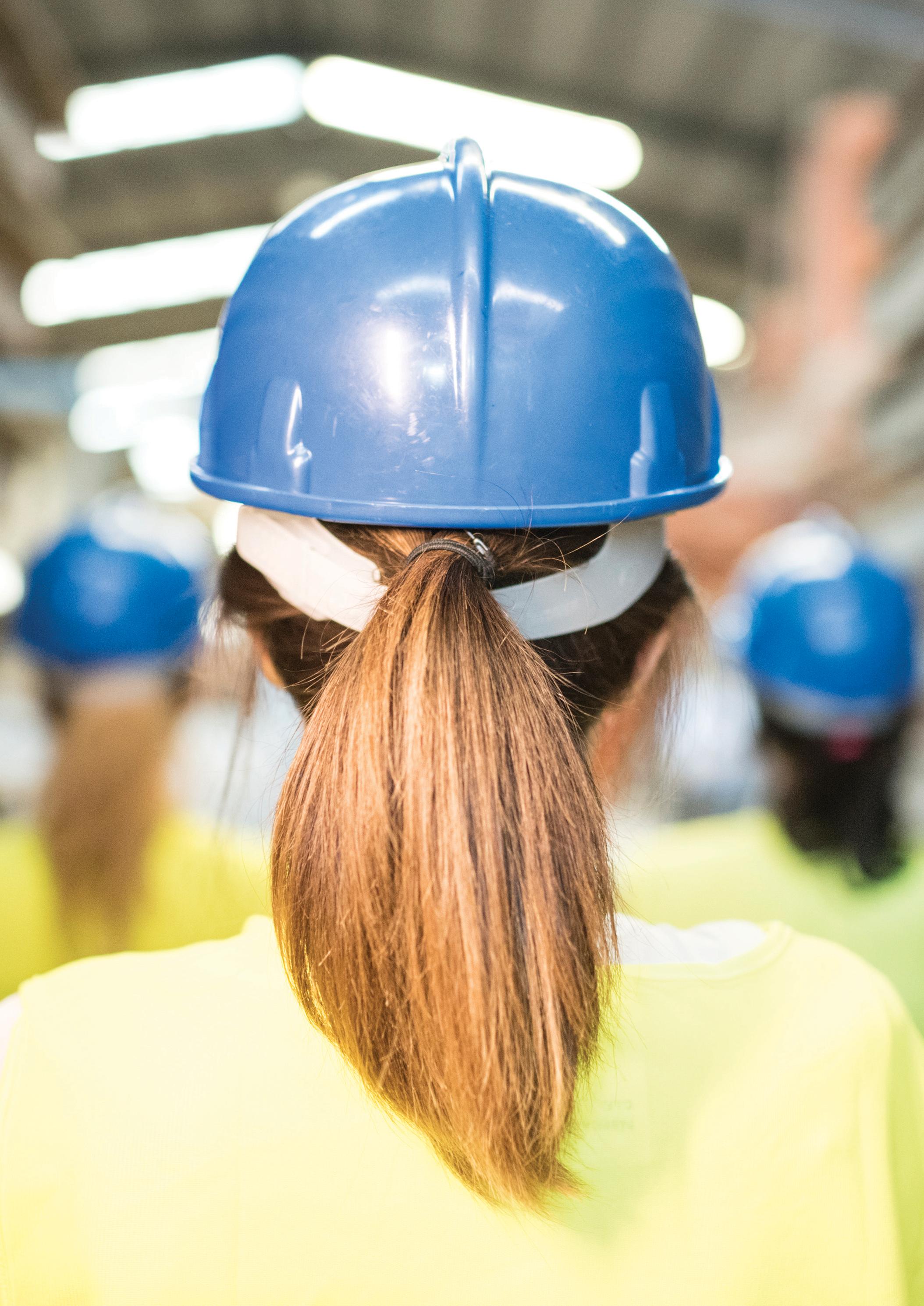
Name: Corina Wang
Company: Stephen Edwards Constructions

Position: Company Accountant
Phone: (02) 9891 3099
Website: www.stephenedwards.com.au
I enjoy resolving complicated issues and being able to contribute my knowledge, experience, and expertise to the company. I love being part of the office environment and I feel valued in my role.

I’m proud of being able to provide accurate, realtime financial information to management, so that crucial decisions can be made in the challenging and ever-changing construction industry.
I also enjoy the success of leading our accounting team to maintain an error-free system.
To ensure the company’s financial system remains progressive, we have migrated to a newly developed system which is web based and has
automated data extraction and electronic workflow capabilities.
I have been heavily involved in the system implementation process from the beginning, through to the creation of system procedures and providing user training. It’s rewarding to see the time, cost and environmental benefits which have resulted from the successful implementation of the new paperless system.
I look forward to continuing my professional development and staying in front of accounting technology advances and best practices, to ensure I can provide efficient and profitable advice to the company.
Name: Peta Dawson
Company: Dawson Constructions

QLD Pty Ltd
Position: Owner/Operations Manager
Phone: 0449560656
Website: www.dawsonconstructions.com
WHAT DO YOU LIKE MOST ABOUT YOUR JOB?
My job is varied and interesting. It has allowed me to increase my skillset to include bookkeeping, health and safety, and social media content creation. The world of construction, although it has its challenges, is a diverse and dynamic sector to be a part of.
WHAT ARE YOU MOST PROUD OF IN YOUR CAREER? CAREER HIGHLIGHT?
Taking the risk to leave my stable role within the higher education sector in 2019 to assist my husband in managing and operating our residential construction company. Continuing to prioritise process improvement and staying updated with industry trends has been essential for the sustained success of our business.
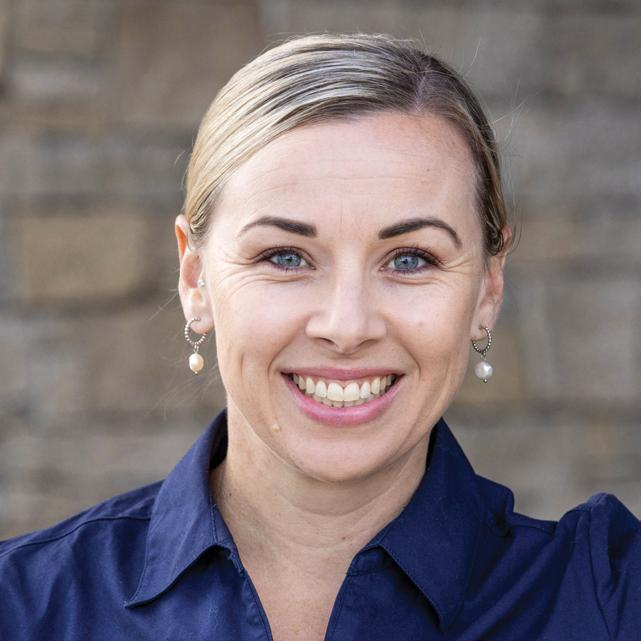

These challenges include persistent material and labor shortages, consecutive interest rate increases, escalating inflation rates, and more stringent lending regulations imposed by banks and other financial institutions. These factors have had a direct impact on the feasibility and profitability of our projects. Despite these obstacles, we have remained committed to delivering high-quality results while mitigating the impact of these external factors on our business.
Over the past seven years, our business has experienced remarkable growth and achieved notable brand recognition. Despite the continuously evolving and demanding business landscape, we have successfully adapted & thrived. I am looking forward to contributing further to the success of our family business and becoming an industry leader in our area.
Name: Megan Mitchell
Company: Alder Constructions
Position: Senior Project Manager
Phone: 07 5514 4900
Website: www.aldercon.com.au
WHAT DO YOU LIKE MOST ABOUT YOUR JOB?
I love that every day is different! This industry delivers daily challenges; an ever-evolving industry keeps each day interesting. Project management also provides a great mix of onsite construction involvement (programming, design, methodology), client relations and financial management.
WHAT ARE YOU MOST PROUD OF IN YOUR CAREER? CAREER HIGHLIGHT?
I am most proud of my journey and success to where I am today as a senior project manager. I didn’t progress through the typical university or trade career path. I worked my way up from a receptionist for a residential builder to where I am today through hard work, dedication and believing in myself.
DO YOU HAVE ANY ADVICE FOR OTHER WOMEN THINKING ABOUT A CAREER IN A MALEDOMINATED INDUSTRY?
Don’t be afraid to be who you are. I grew up being taught everyone is a person, whether it be male or female, and everyone has something different to offer. Be confident in your abilities and don’t be scared to show the feminine side of who you are.
DO YOU THINK THAT THERE HAVE EVER BEEN SPECIFIC CHALLENGES RELATED TO YOUR GENDER IN YOUR JOB?
The main challenge I have faced is respect. As a woman I tend to find you don’t gain initial respect from other male professionals in the industry. Males can tend to walk in a room and no matter what their position is, the respect seems to be mutually there, whereas it is something I have had to continue to earn throughout the years.
Name: Aileen Grant
Company: Blueprint Projects Pty Ltd.
Position: Business & Finance Manager
Phone: 0415 642 984
Website: www.blueprintbuilders.com.au

Blueprint Projects specialises in architectural alterations and additions and new homes. We do most of our work in the lower north shore area of Sydney and wherever our lovely clients and architect referrals take us.
We have a great team of subcontractors and suppliers, who work together and are all solutionsdriven. Our teams are aware of the trades that are coming behind them and are respectful of each other.
Every site throws up something new, and I am lucky to work with a great group of people we can rely on and trust to ensure the delivery of a great product to our clients and an enjoyable building process.
We won a Master Builders award in 2021. We were unbelievably proud of our hard-working team for winning this award. Personally, I was so happy to hear the judges’ comments and thought, finally some recognition. Or perhaps it gave me some confidence that I needed to keep going and reaffirmed I was on the right path.
Hard work trumps everything. Success in any industry requires hard work both for men and women.
I believe women bring a different perspective and skill set to the construction industry.
Having good people around you to support you and help you will give you the confidence needed.
Name: Aisling Mulvaney
Company: CIP Constructions
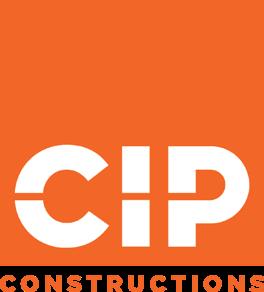
Position: Site Engineer
Phone: 1800 829 877
Website: cipconstruct.com.au
Recently, I changed roles from being an estimator to site engineer and I am enjoying learning everything about the construction side of the project. I like learning how all the different elements of an industrial facility come together and seeing the progress made each day. Plus, seeing the physical results of my work is incredibly satisfying.
WHAT ARE YOU MOST PROUD OF IN YOUR CAREER?
I’m proud of myself for stepping up and saying I wanted to change roles and experience working on-site. This led me to request a move to another CIP Constructions office in a different state; where I could learn more

about construction in a completely different environment.
WHAT HAVE BEEN THE CHALLENGES OF THE LAST 12 MONTHS?
Moving into a new role with a different team in a different state is naturally going to come with some challenges. Luckily for me these are the best kinds of challenges – ones that encourage me to push myself, grow professionally and face new experiences.

HOW HAVE YOU PERSONALLY FOUND WORKING IN A MALE-DOMINATED INDUSTRY?
It can be a little intimidating to work in a male dominated industry, especially when you are new to an industry and learning to find your voice. I am fortunate to work with a really great team and have always felt supported and encouraged by both my male and female colleagues.
Mediterranean interior design is colourful but restrained. It’s not a free-for-all like boho, but rather uses the colours of the Mediterranean landscape as a guide: so think sandy beige or warm cream like the sun-bleached walls and sandy beaches. Now you want to go and add brilliant blues and rich, deep greens to reflect the sea that gives the area its name. Finally, throw in lashings of rich yellow and terracotta like the warm, carefree sunshine that kisses the region all year round.

Just as colour should be used cleverly, texture is key to Mediterranean design as it brings depth and character to a space. Stucco or plaster on the walls are tactile and interesting, as are colourful mosaic tiles or hand-painted ceramics. Pepper these accents through your kitchens and bathrooms to bring your space to life.
Mediterranean is a style that is as hot-as-a-Santorini-sunrise right now, and for good reason. Inspired by the coastal regions of Greece, Italy and Spain, the style is warm and inviting, beachy without being nautical.

At its very heart, Mediterranean design is a celebration of natural, earthy materials. Think stone, clay and wood in rustic, warm tones. We’re talking terracotta tiles, limestone or travertine flooring. Show off those exposed beams on the ceilings and sink into your shabby chic sofa. Everything should feel organic, warm and a little rough around the edges… but in a good way!
If you like your interiors sun-drenched, laid-back and a little bit rustic, look no further than the shores of the Mediterranean for a bit of style inspo.
JENNA MARTINExposed beams, rustic wooden furniture and rusty accents are all key Mediterranean features.
Image: iStock
The furniture in Mediterranean homes should be low maintenance, hardy and comfortable. Homes feature pieces made from natural materials like wood or wrought iron, upholstered in soft fabrics like linen or cotton. Ornate detailing and carved accents give furniture a sense of feeling individual and unique, like you picked it up at a flea market outside of Palermo on a hot Sunday afternoon. Accents should again be in those key colours like terracotta or turquoise and are used to add warmth and texture to your space. Anything that looks like it could be thrifted from a beachside stroll works well - think driftwood, coral or shells - along with textiles featuring botanical or floral motifs and vivid patterns.
Lighting should be soft and diffused. Ditch the downlights and opt for pendants, chandeliers and wall sconces with warm white globes to offer a soft and romantic ambiance all year round.
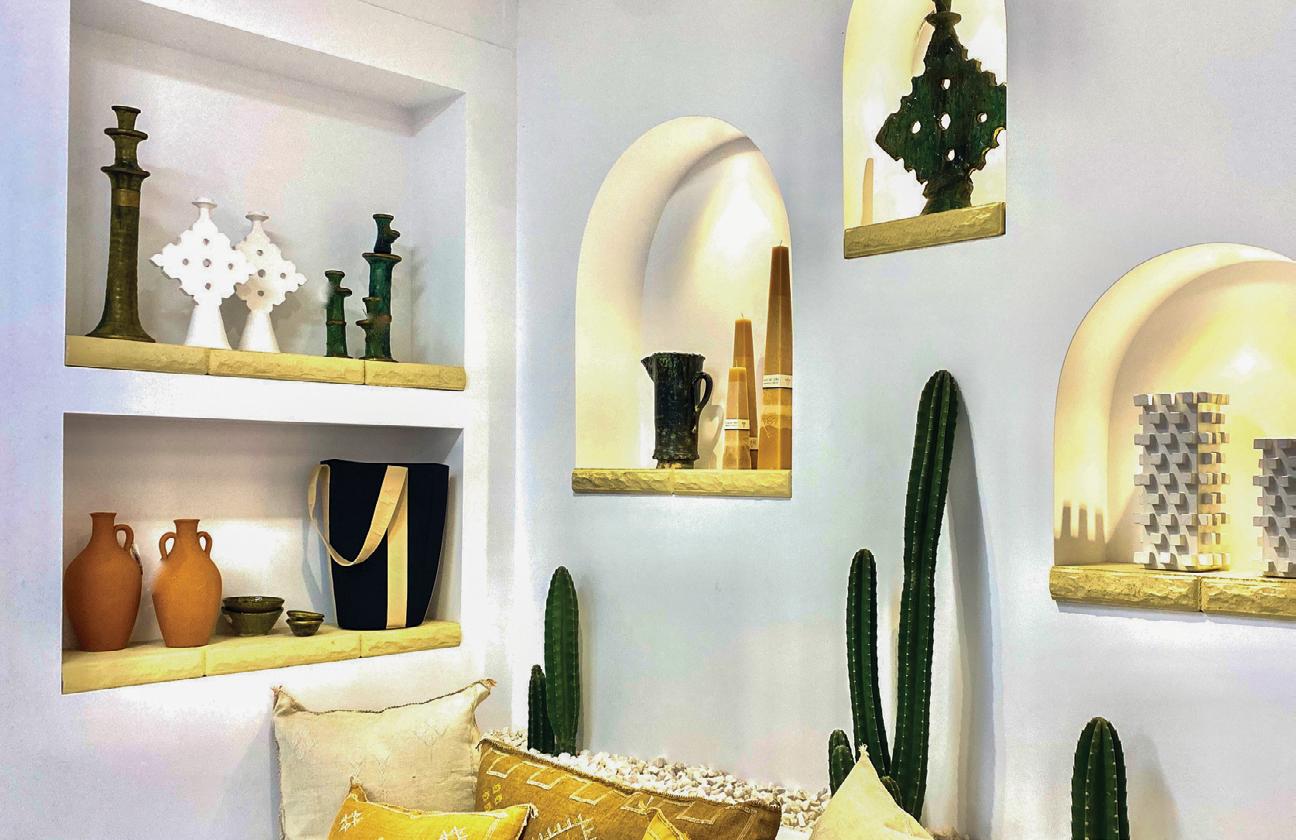
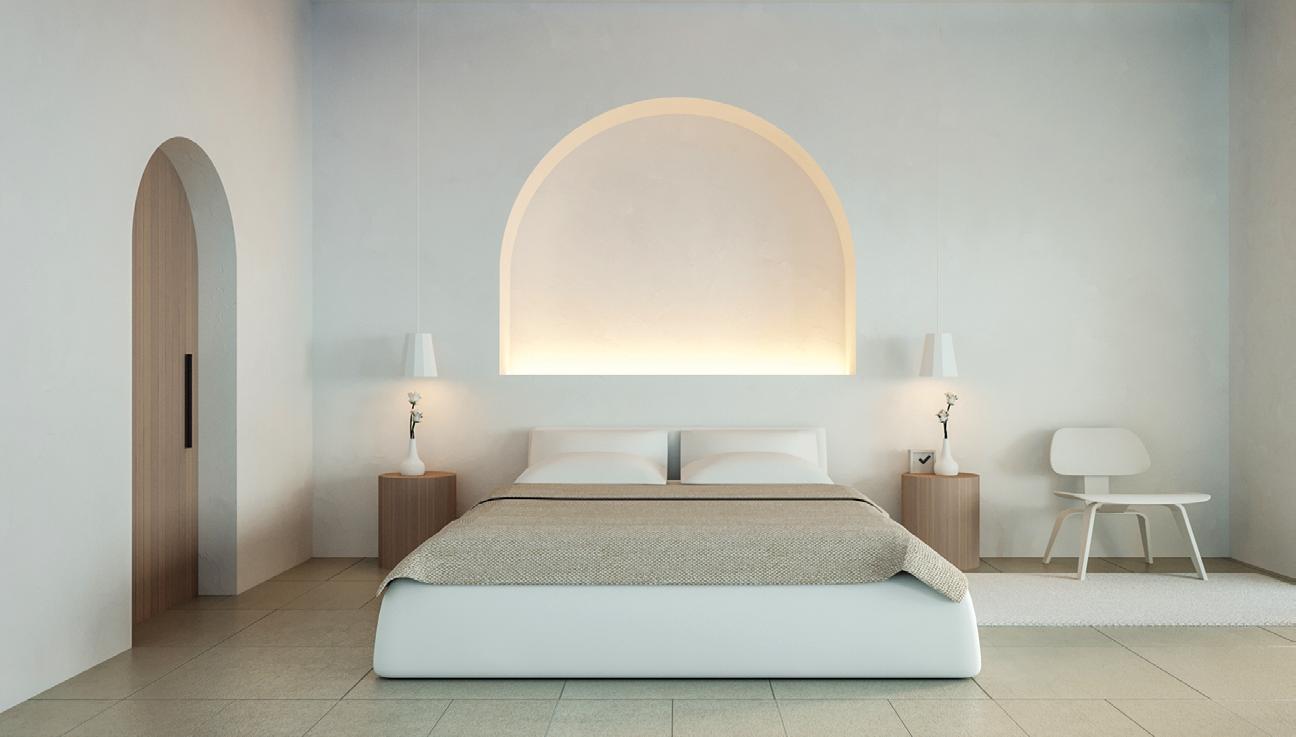
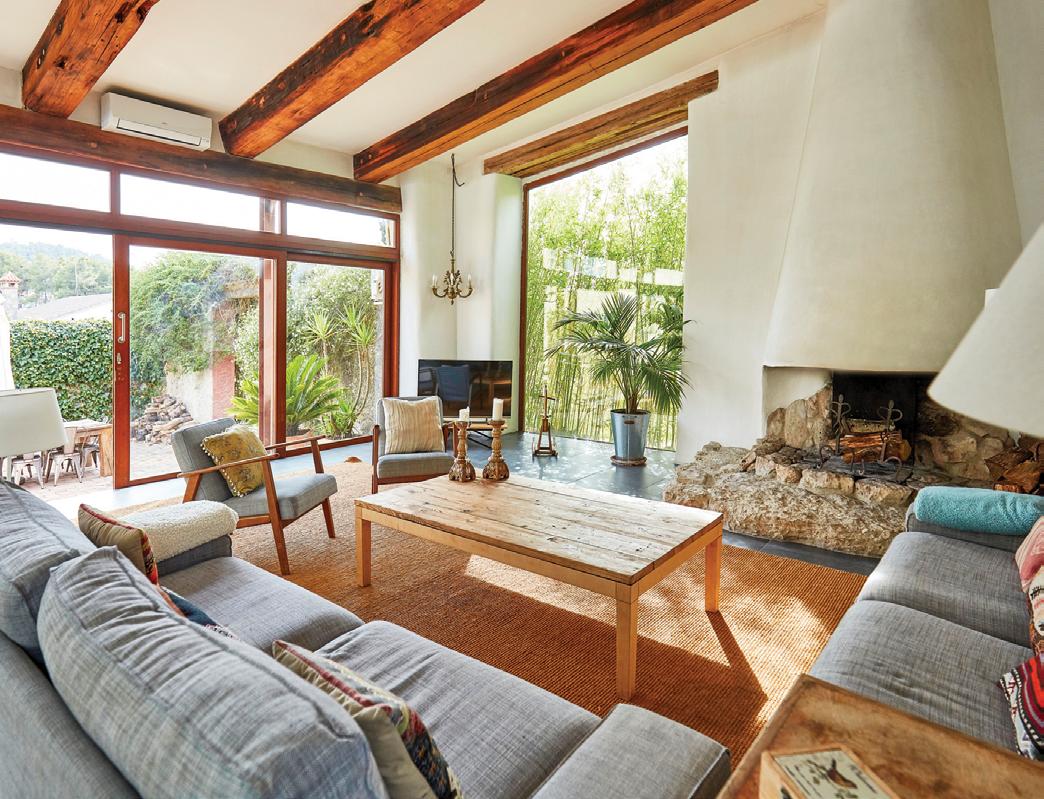
The Med is perfect outdoor weather year-round, and that feature filters into the best Mediterraneaninspired homes. Indoor-outdoor living is key, so think French doors that allow natural light to flood the space and bring the outside in. Mount indoor plants in a lush, sunny corner or let a climbing fern run wild from your bookshelf. If you can, fill you outdoor space with life: think lush greenery, fragrant flowers or climbing plants like bouganvillea to add colour and vibrancy, all the better to be admired through your floor-to-ceiling windows.
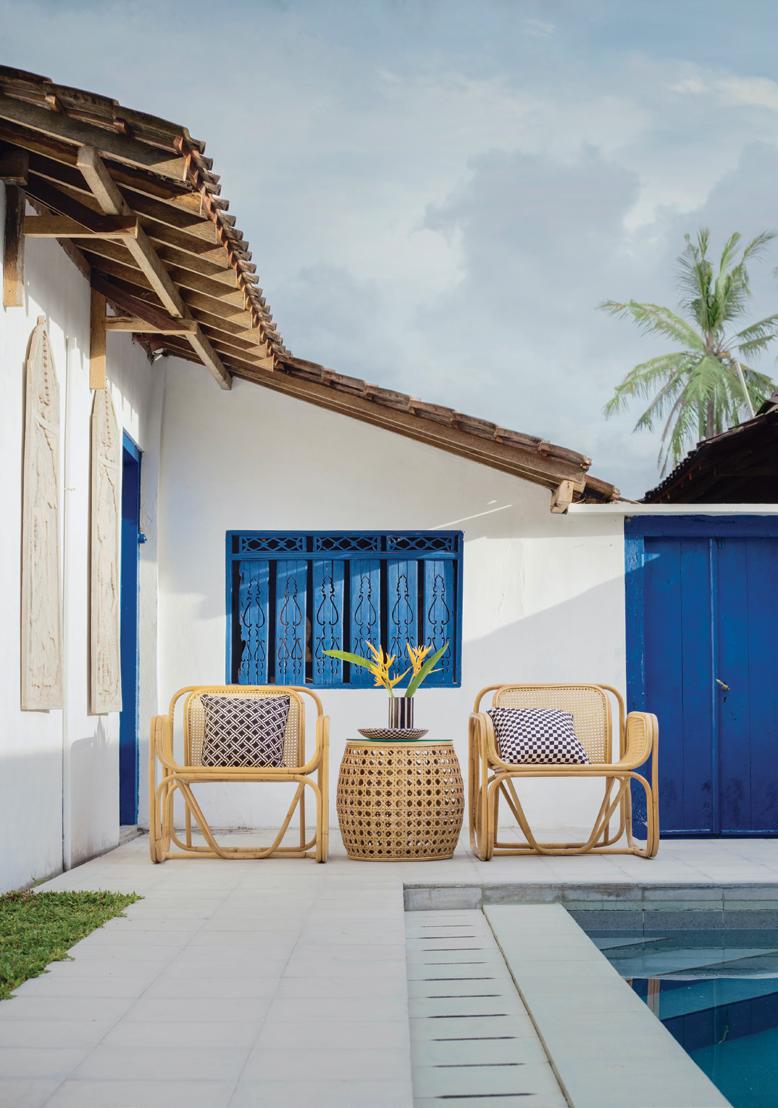
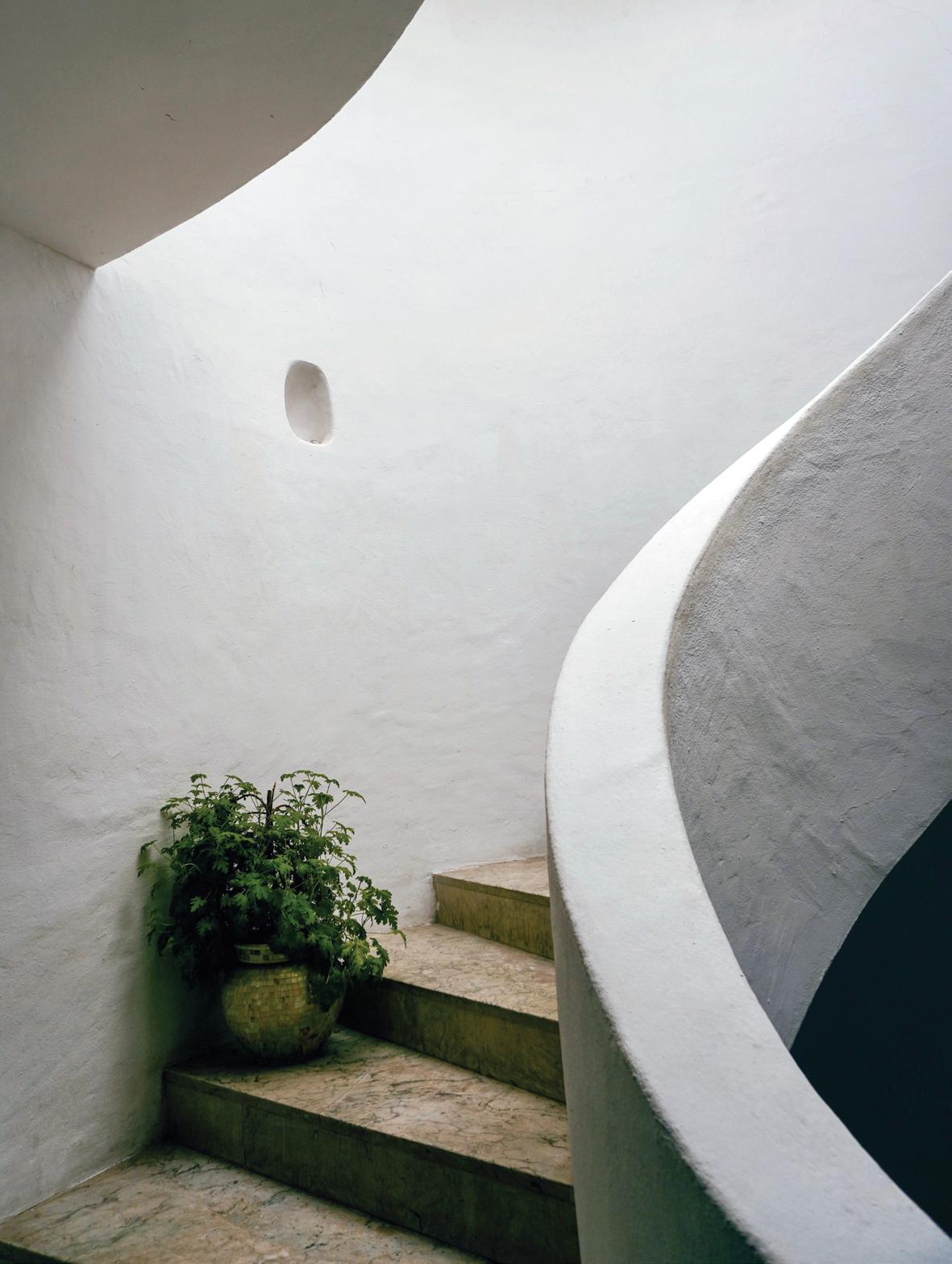
Mediterranean is all about turning your home into a sanctuary, a place where time slows down, life feels simpler, warmer and more comfortable and every day is Aperol Spritz o’clock.
Turquoise
Plastered walls on this curved staircase keep things tactile and interesting. Curves, whitewashed walls and clean, simple furniture in this Med-inspired bedroom. Image: iStock An open-plan living room leads out to a lush, green courtyard. Image: iStock Accents should be considered and furnishings warm. Image: iStock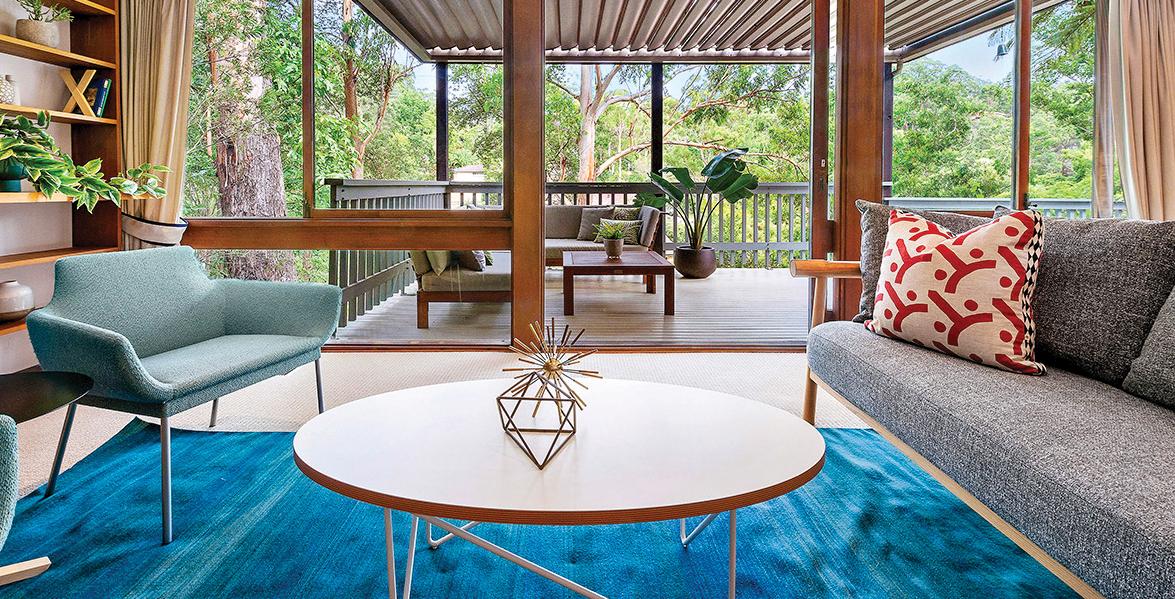 JENNA MARTIN
JENNA MARTIN
Emerging in the mid-20th century, this design movement continues to inspire and excite renovators, interior designers and architecture geeks to to this day.
Timeless, beautiful and functional, Mid-century Modern design is characterised by clean lines, organic forms and functionality. An enduring symbol of quiet elegance and sophistication, Mid-century Modern is also characterised by its seamless integration of indoor and outdoor spaces.
In fact, because the Mid-century Modern movement has so infiltrated the way we think about furniture, design and the way we live, chances are your home is filled with Mid-century elements and you don’t even realise it. But if you are in love with the aesthetic and want to maximise the look at your place, here is what you need to know.

A far cry from the more ostentatious design movements that preceded it - like Art Deco and Hollywood Regency - Mid-century modern was all about no-frills beauty and function over form. Midcentury Modern furniture is designed to focus on ergonomics and comfort. Chairs feature organic shapes that conform to the contours of the body, while tables and cabinets are often multi purpose, with built in shelving or hidden compartments, making efficient use of space. But being simple and functional doesn’t mean sacrificing beauty.
In Mid-century Modern design, clean lines and geometric shapes take centre stage, creating harmony and balance. Furniture pieces are sleek and streamlined, with tapered legs and smooth surfaces. The result is a space that feels perfectly curated yet immensely functional. Each piece of furniture is designed so it could stand alone as a feature piece, but combined,
brings a room to life with simple sophistication and harmony.
Natural materials are a huge part of Mid-century Modern design. Wood - especially teak, which was rich in colour and super durable - was used for furniture, flooring and paneling. The warm tones and rich textures of these materials add depth and warm to the space, while other natural elements like stone, brick and leather help to create a tactile and organic feel.
Other huge Mid-century modern elements include metal, glass and vinyl, often used together to create geometric shapes that feel curvy and clean. The famous Eames chair (created in 1956) is a hallmark of the look and the era, but it’s one that is full of statement pieces that have stood the test of time, like the egg chair and the tulip table.
Today, most homes strive to incorporate a layout that promotes an integration of indoor and outdoor space, reflecting the way we live: open plan, family friendly and relaxed. But these ideas all sprung from Mid-century Modern design, which was the first to

embrace an open and airy layout where rooms aren’t divided by walls, but by strategic furniture placement. Large windows and sliding glass doors are often used to let the outside in and blur the boundaries between the interior and the surrounding environment. It doesn’t just make a home more functional, it also creates an abundance of natural light, creating an atmosphere that is bright, warm and inviting.
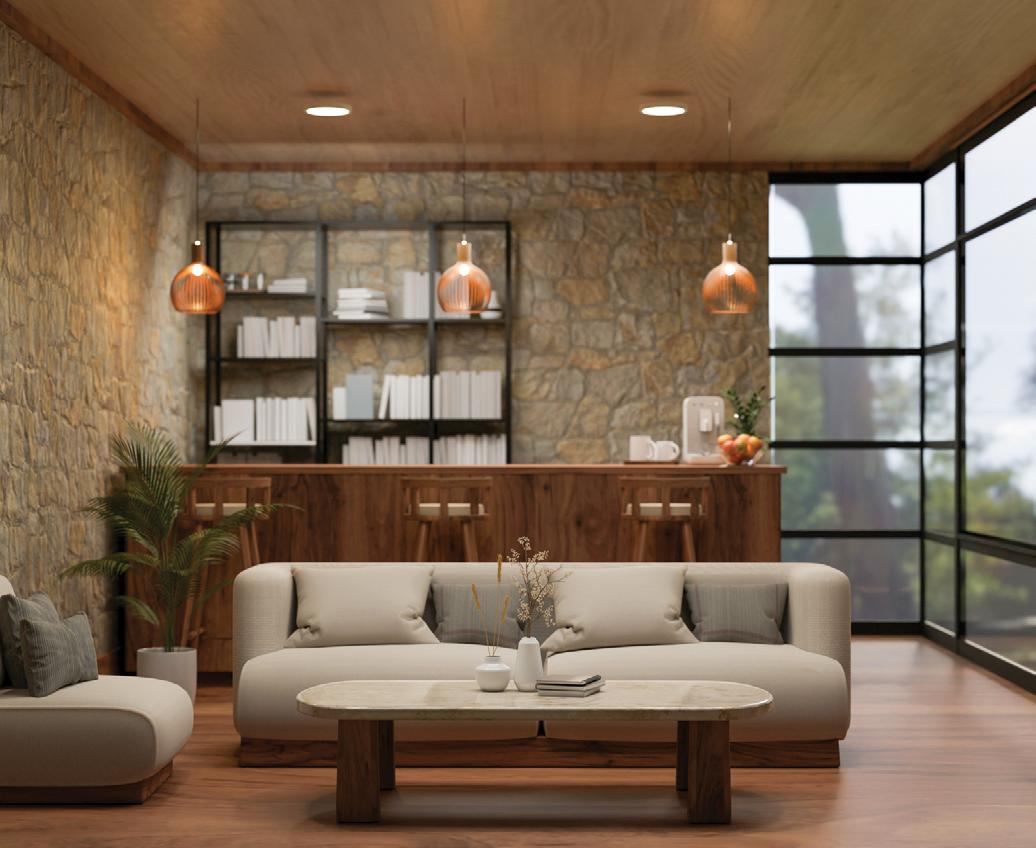
Bold and vibrant colours are a huge feature of Midcentury modern design. While it’s true that wood tones and neutrals like white, gray and beige are the backdrop colours of the movement, they’re frequently juxtaposed with bright splashes of colours like poppy red, mustard yellow and avocado green. These pops of colour infuse energy and character into the space, making the overall design more dynamic, interesting and more playful. Oftentimes colour is integrated through accessories like abstract art, geometric patterns and bold textiles or sculptural lamps that inject personality and create focal points within the room.
Whether you’re keen to recreate the classic Midcentury Modern look or simply incorporate elements of it into a contemporary setting, these key design features are a great foundation.
 Dark wood accents, floor-to-ceiling windows and open-plan living. Image: unsplash
Simple lines and geometric shapes in this Mid-Century-inspired furniture from Castlery.
Dark wood accents, floor-to-ceiling windows and open-plan living. Image: unsplash
Simple lines and geometric shapes in this Mid-Century-inspired furniture from Castlery.
According to the Australian Bureau of Statistics (ABS) new data has shown that working Australians have experienced the highest yearly jump in the cost of living on record. While the consumer price index (CPI) is currently running at 7 per cent per annum, actual cost of living increases are 7.1-9.6 per cent, all higher than the CPI.

Right now, everything feels very uncertain in the economy. I have certainly noticed that client spending is slowing as well as the number of new job leads. Now is a great time to look at your finances and see what you can tighten up to give yourself a bit of breathing space and prepare for whatever lies ahead.

Here is a list of things you can do straight away to help you free up some of that all-important cash flow.
1. Create a Budget Make a list of your monthly expenses and compare it to your income. This will help you see where the gaps are. You can then cut back and prioritise your spending.
2. Avoid Unnecessary Expenses Take a hard look at your budget and cut out anything that’s not essential. Cancel any subscription services that you’re not using, like gym memberships or app subscriptions (I just saved $200 a month by reviewing mine – some I didn’t even realise I had). Consider lowering your data plan if you’re not using all the data you’re paying for each month.
3. Downgrade Subscription Services If you can’t bring yourself to cancel those subscription services, consider downgrading instead. Netflix, for example, offers a basic plan for only $8.99 per month, which gives you access to a wide variety of movies and TV shows without breaking the bank.
4. Cut Back on Energy Usage Big businesses do this constantly. A few small changes in the way we live and use energy can add up to big savings over time. Turn off lights when you leave a room, switch to LED lightbulbs, and unplug electronics when they’re not in use. Leaving things like printers and computers plugged in with all of their glowing lights
are known as parasitic loads. They consume much more energy than you think. You’ll be surprised at how much you can save on your energy bill each month.
5. Pay off Debt Interest rates are skyrocketing. If you have credit cards or loans, prioritise paying off your debts as soon as possible to avoid accumulating more interest charges.
6. Negotiate Bills Call your service providers (internet, phone, etc.) and ask if there are any promotions or deals you can take advantage of. You might be surprised at how much money you can save.
7. Take Advantage of Free Entertainment There are plenty of free events in your area like concerts, art exhibits, and outdoor movies. Check out local listings to see what’s available. much cheaper. Give them a try and see if you notice a difference.
8. Bargain Hunting We all like this one. With a bit of research, you can find amazing deals on everything from groceries to clothing. Don’t forget to compare prices before making a purchase either – you might be surprised at how much prices can vary between stores.
9. Cook at Home Eating out or ordering Uber Eats can be tempting, especially when you’re short on time, but it’s also one of the easiest ways to overspend. Cooking at home is not only cheaper, but it can also be healthier and more enjoyable. Try meal prepping on a Sunday afternoon to save time during the week or take turns cooking with friends to mix things up.
10. Shop Second-Hand Charity stores and online marketplaces like Facebook and eBay are great places to score good quality used clothing, furniture, and homewares. Vinnies is a great place to pick up quality clothing at bargain prices. Not only will you save money, but you’ll also be doing your part for the environment by reducing waste.
Remember, every little bit counts when it comes to saving money. By implementing these tips and tricks, you’ll be able to increase your savings and weather any economic storm.
MPORTANT LOW Co2
Firecrunch has developed a low Co2 cladding,only 5% pollutive compared to Plaster board. As of now the FCA,the 10mm product is available at rates less than the 5 majors, in 13mm and 16 mm fire rated cladding and meets AS1530.4 FRL 90/90/90 with 1x 10mm K Clad PS alone. So pricing is no longer a reason not to specify this tree saving, planet friendly cladding. FireCrunch CSIRO Tested AS1530.4 NCC 2019



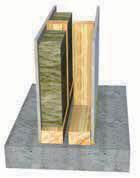
All Firecrunch MgSO4 cladding for wall floors Groove boards, interior and exterior,decking, roofing, BAL FZ ,and Flooring is between 20% and 30% less than other competiive products and also 5% Co2 level

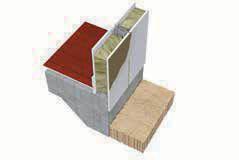

Every other day I am on LinkedIn or other socials, I see a new group breaking ground in the area of supporting women in trades, construction, mining, and STEM. I find this to be something worth celebrating, especially given there was nothing around when I started.
I often get amused by the reaction when people comment on my industry longevity because I was told to my face that I did not belong.
“No women on the worksite.”
“You are taking the job of a man who needs to feed his family.”
“We aren’t changing things around here just ‘cause you girls think you can do a man’s job.”
It is no wonder that support groups for women have come of age, offering insight into how to deal with the unique challenges that being a woman in trades, construction, mining, and building bring. We work longer hours than most. In all sorts of conditions. With risks that outsiders to the industry cannot comprehend. Women are generally, naturally, built to share. Small wonder we create groups of like-minded intent to communicate and collaborate with others in our space.
Traffic controllers are one of the most maligned workers on the road, and yet the most necessary to save lives. Small wonder that women need a place to share these experiences with other women who get it. I can share as many stories with my hairdresser as I like, but she can’t empathise with the abuse, the rain, the cold, the hours, although she can empathise with a career mainly conducted standing!
An internet search will find a local chapter near you, or how to join a variety of organisations that exist specifically to support you. Kicking off the
middle of this year is a podcast by a very active tradeswoman who has done some fabulous work in her area of HV mechanics - she is making a place for the “anxious tradeswoman”. Another podcaster basically invites you to have a “beer” with her over a chat and she has been doing that for quite some time as an experienced senior from the mining industry.
Then there are the social groups - again across the socials, not just the professional or advocacy ones. One of the other writers for this magazine hosts an amazing and supportive group that offers advice and comfort to women in trades and wives to tradies. She isn’t the only one, there are many more and not just limited to Australia.

The incredible STEMPUNKS, TECH GIRLS, and a relative newcomer STREET SCIENCE are taking the message of STEM to our children through award-winning and creative education and play. It is an exciting time to be a child learning STEM with the rise of VR enhancing the apps and outputs for those who are looking for ways in which technology is changing our work landscape.
I recently hung out with Awesome Woman In Construction, which has developed an app about career paths in trades, construction, etc. It also offers insight into the level of pay and wages likely for the career, a clever way to showcase the potential of the career types. Showcasing to a school careers fair showed that this idea was of interest and was well received by the students we spoke with.
In short, whatever flavour you choose, there is a support group, a podcast, an industry advocacy space for you to join and be supported by. There are many out there, find your tribe and gain that edge with support and advocacy, friendship and mentorship, from those of us who have been there and are doing that!
Becky Paroz is an award-winning, successful senior project manager, general manager, and performance coach. Becky is a much-requested mentor and business coach to SMEs. She also shares her knowledge through a variety of writing projects and as a podcast guest across the globe. She gives back through several industry mentoring programs as part of her support to women in the building and construction industry. After three years or more of writing for this magazine, she wonders if anyone reads the articles. She’d like to think she is helping someone.



DATE: Saturday, September 16, from 6pm
WHERE: The Star, Sydney
WHAT: The Master Builders Association of NSW Excellence in Housing Awards stands as the pinnacle of recognition for residential building achievements in the state. This esteemed event honours excellence, innovation, and quality within the NSW building and construction industry. The Excellence in Housing Awards serve as a platform to showcase the finest residential constructions, drawing participants from various sectors including project home builders, contract builders, apartment constructors, and builders specialising in additions, alterations, and renovations. It brings together a diverse cross-section of the residential building sector, highlighting the best and most noteworthy contributions to the industry.
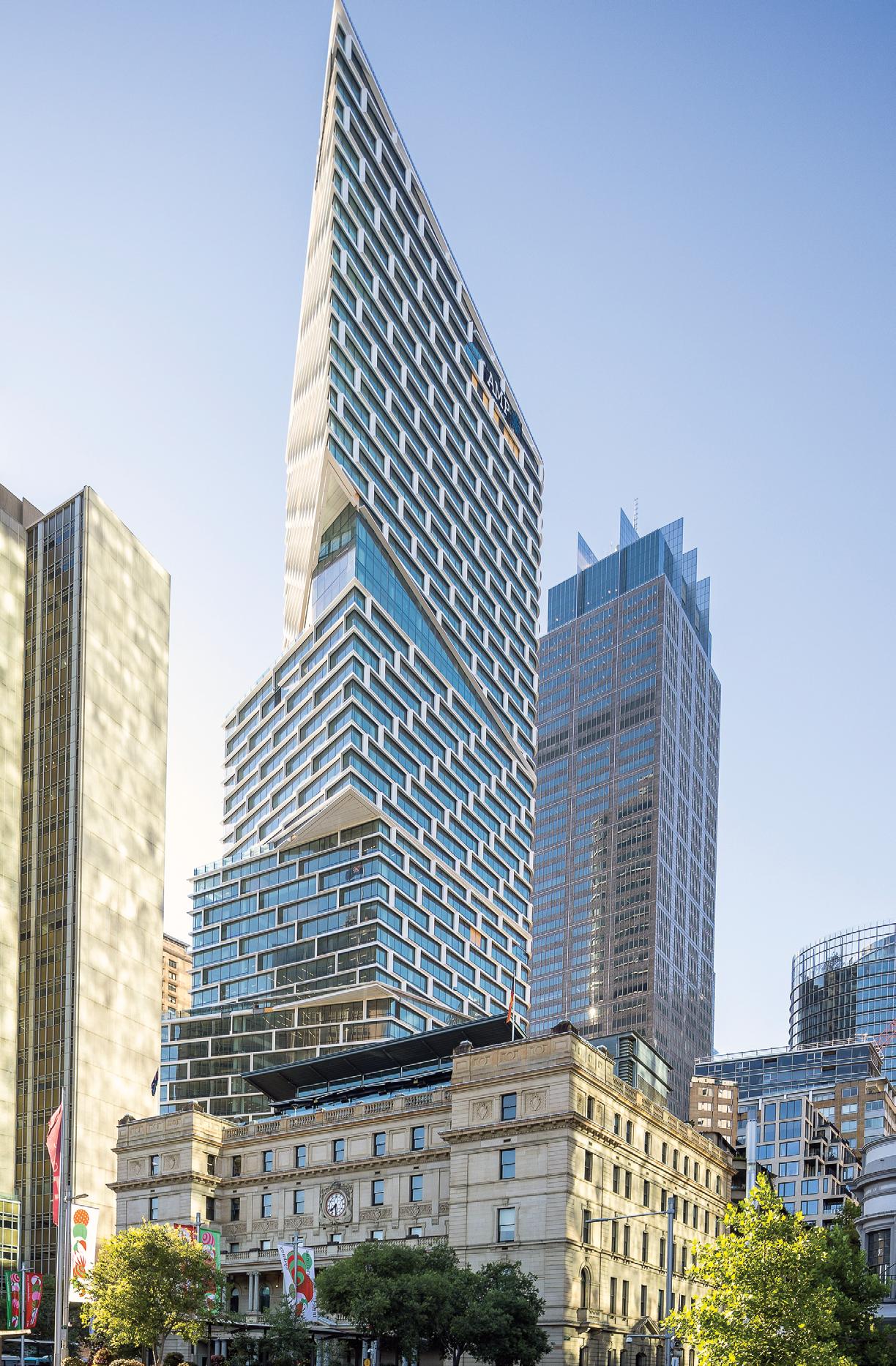
DATE: Saturday, November 4, from 6pm
WHERE: The Star, Sydney
WHAT: The Master Builders Association of NSW Excellence in Construction Awards holds a prominent status within the industry as the premier annual event for the commercial, industrial, and civil engineering sectors. These prestigious awards serve as a platform to celebrate remarkable accomplishments by companies and individuals within the building and construction industry in NSW. For nearly three decades, numerous outstanding commercial builders in NSW have been acknowledged and honoured for their exceptional construction excellence, cementing their reputation as industry leaders.

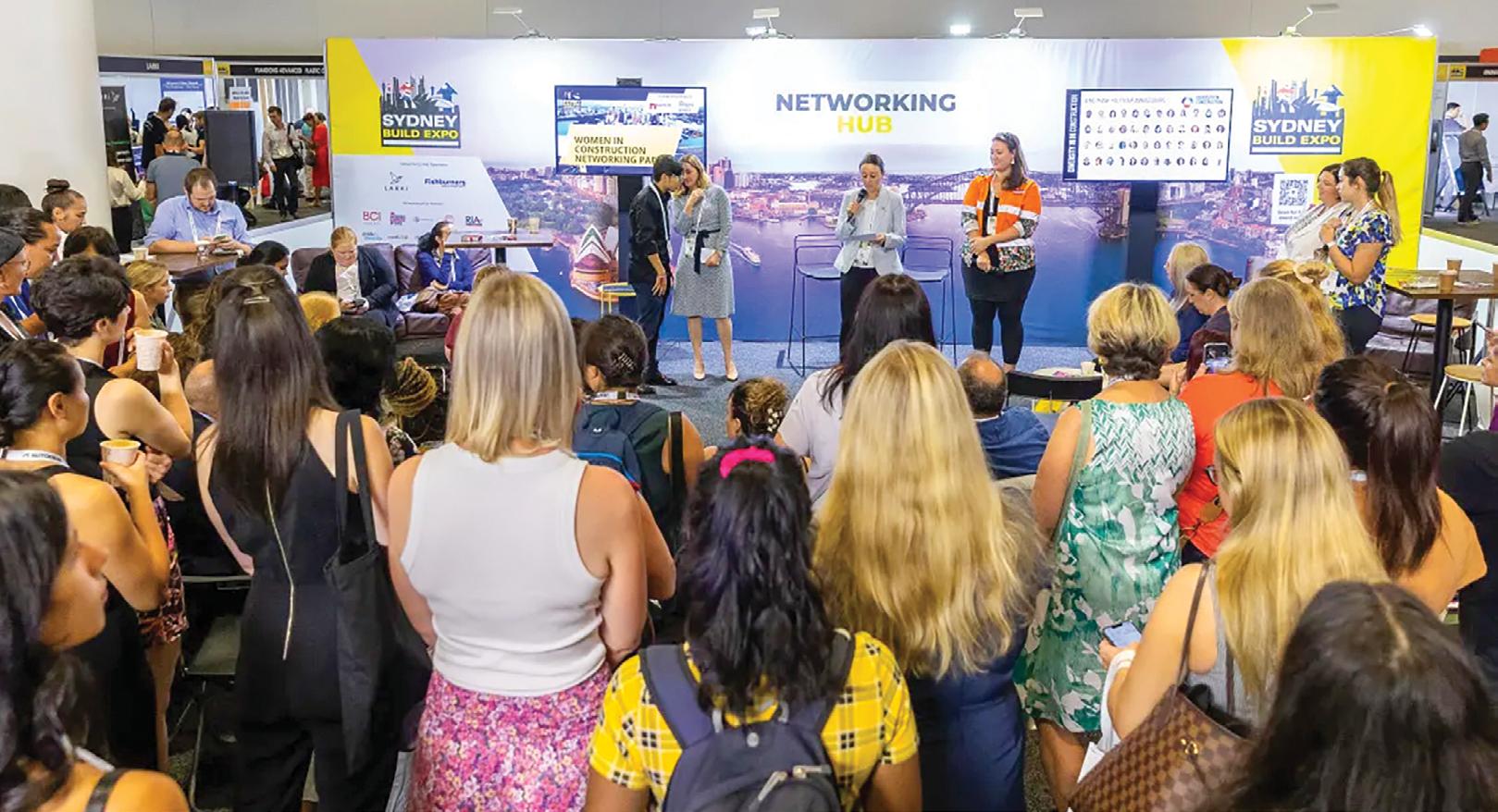
DATE: May 1-2
WHERE: ICC Sydney
WHAT: This session is free to attend for all and offers the chance for all professionals and students interested in construction, architecture, engineering and related fields to network, learn and feel inspired. Learn from a panel of established experts discussing the untapped opportunities for women, challenges faced and industry changes that are needed across the workplace. Alongside our line-up of panelists, Sydney Build works with an amazing team of Women in Construction ambassadors who are furthering equality in the built environment. Join these architects, engineers, designers and diversity champions at the networking event to hear what they’re doing to make lasting change.
WHEN: Friday, May 3, 2024 and Friday, August 23, 2024
WHAT: This luncheon celebrates women and their achievements, acknowledging gender diversity issues and offering a platform for women to contribute and connect with inspiring and motivational guest speakers.
With two luncheons each year you can get together and help construct a new perspective with us.
To enquire about partnership opportunities, please contact Amanda Kelly at akelly@mbansw.asn.au or 02 8586 3504.


Women Building Australia’s Business Resilience initiative provides business operator training and has just launched mentoring on demand. These programs are crucial to developing successful female-led businesses in the building and construction industry.
The Women Building Australia Mentoring On Demand program provides a self-matching, on-demand mentoring experience, allowing mentees to seek assistance for a specific acute business issue they are facing. The mentee can search out a suitable mentor and receive practical advice and guidance from experienced industry practitioners.

For mentees, the program provides a safe and confidential space to explore issues and concerns in a supportive relationship, receive experienced guidance and support, learn from the real-life experience of other construction business owners, explore business options and tactics to solve their acute business issue, receive feedback and developmental guidance, and network and connect with other experienced industry practitioners.
For mentors, the program provides an opportunity to contribute back to the industry and help to build robust building businesses, enrich their mentoring and leadership skillset, gain intellectual challenge and new perspectives, exercise emotional intelligence, network and connect with other industry practitioners, and help shape the women in the construction business community.
To be eligible to join as a mentee, individuals must be female, leading and/or running a small to medium
building and construction business, an owner/ operator or in a senior/management role and running the business side of the operation, either on or off the tools.
To join as a mentor, individuals must have at least 10 years of industry experience, be female or male, an owner/operator or in a senior/management role in the industry and have experience running a building business or currently employed in a management or supervisory role in the building and construction industry.
Each mentoring relationship lasts a maximum of three months, during which the mentee outlines the specific acute business issue they are facing, and the mentor provides advice and guidance based on their own experience to help the mentee solve the issue.
For more information, or to apply to the Mentoring On Demand program, visit www. womenbuildingaustralia.com.au/business-resiliencementoring-on-demand
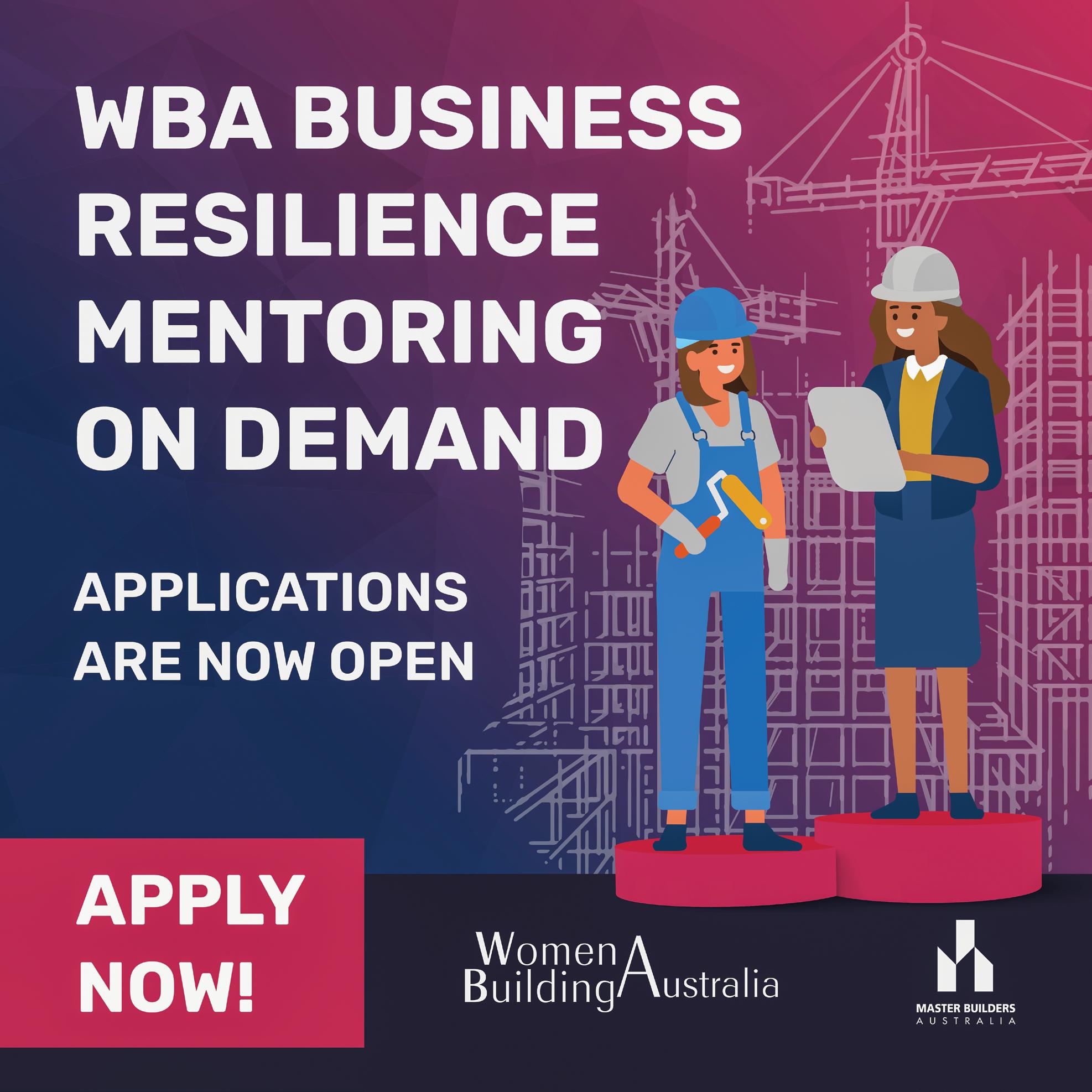

The construction industry, like any other physically demanding field, often relies on a lot of grit and at least a little heavy lifting.
While OHS have reams of information on how manual work can affect your lower back, there’s a crucial aspect of women’s health that has been overlooked for too long in such work environments: the impact of lifting on pelvic floor health.
The remarkably complex pelvic floor and its disorders are one of the most interesting - and challengingareas of physical therapy. These important muscles and ligaments span the bottom of the pelvis and support the pelvic organs: bladder and bowel, and uterus in women.
Florence spoke with Lori Forner, a dedicated pelvic floor physiotherapist and host of The
Pelvic Health Podcast, about why women in the construction industry should take extra care when it comes to their pelvic floor.
Currently pursuing her Ph.D. with the University of Queensland, Lori’s research project “Pop Lift” is looking at the correlation between heavy lifting and pelvic floor disorders - especially in women who have experienced at least one vaginal delivery, a well known risk-factor for pelvic organ prolapse.
Her study wants to determine whether women who engage in regular heavy lifting demonstrate greater pelvic organ descent compared to physically active women who avoid heavy lifting. Heavy lifting as a risk-factor in the development and progression of pelvic floor disorders has long been acknowledged but scarcely researched. However, Lori is determined to dig deeper into this issue.
“A lot of our knowledge about heavy lifting is based on research that was done in occupational lifting in nurses a very long time ago, and was very subjective. They just kind of did a survey and decided, ‘oh, okay, all of these women who seem to have prolapse are also nurses doing the heavy manual lifting’, which they don’t really do anymore. But then no one’s ever really looked into it further.”
“Heavy lifting has always been deemed to be a risk factor for pelvic organ prolapse, which is a pelvic floor issue where the bladder or the uterus can drop down. It’s often because the person is placing so much more pressure on their pelvic floor than their body can handle.”
“And if people don’t do anything about it - they ignore it and they keep pushing through - that just makes things worse,” explains Lori.
Lori wants to empower women with the understanding of how things like heavy lifting and giving birth can impact their pelvic floor health. As pelvic organ prolapse can cause significant discomfort and complications if left unaddressed, Lori is passionate about encouraging early detection and intervention.
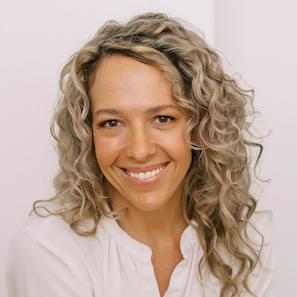
She emphasises the complex nature of postpartum recovery.
“Genetics also play a really big role in how well your body will come back from giving birth. But so does your fitness beforehand, or how fast you go back into those activities.”
She underscores the significance of proactive measures in ensuring pelvic floor health, particularly for women rejoining physically demanding professions after giving birth.
“If you have discomfort going to the bathroom, or using a tampon, or if having sex is uncomfortable or painful or if you’re leaking urine or if you feel like there’s a bulge sensation, you should see a pelvic floor physio immediately.”
Lori is determined to change the hush-hush attitude Aussie women generally have around reproductive health and advocates for open conversations about intimate health matters. With her podcast full of interesting guests and light but informative conversation, Lori hopes to create an environment where women feel comfortable booking in a pelvic health screening to see if they are at risk of pelvic floor problems.
By normalising conversations about pelvic health and following practical steps to protect workers, the construction industry, and society as a whole, stands to benefit from a healthier and happier workforce.
1. Try to avoid heavy lifting Keep anything you lift within a manageable range. Never lift anything heavy enough to make you strain or inclined to hold your breath. Avoid lifting from ground level if possible; aim to lift from waist height.
2. Use your pelvic floor muscles Lift your pelvic floor muscles prior to and during work, and relax fully between sets or repetitions. The goal is for your pelvic floor to be working immediately before and as you lift/ lower/push or pull any load.
3. Lift with good posture Maintain the normal inward curve in your lower back during every lift you do, regardless of whether you are sitting, standing or lying on your back. This will promote the protective activity of your supportive deep abdominal and pelvic floor muscles and discourage the activity of your strong outer abdominal muscles.
4. Exhale with every effort Never hold your breath or pull your stomach in strongly during your exercise as this increases the downward pressure on your pelvic floor. Breathe out with every effort, whether it is a lift, push or pull, to reduce the likelihood of straining your pelvic floor.
5. Keep your feet close together You’ll find it easier to activate your pelvic floor muscles when your feet are close together and your pelvic floor openings are less exposed. Hip width means that your knees should be approximately fist width apart.
6. Take special care when you’re tired or injured When you are very tired, unwell or have lower back pain, your pelvic floor and deep abdominal muscles may not work as effectively and you will be more prone to symptoms and injury.
In a groundbreaking endeavour last September, a team of researchers from UNSW Sydney secured an impressive $2.3 million grant funding through the federal government’s Women’s Leadership and Development Program. Their focus: to make a resounding impact on the male-dominated construction industry and empower women within its ranks.
Led by Dr Cynthia Wang and Associate Professor Riza Yosia Sunindijo, both from the School of Built Environment at the UNSW Faculty of Arts, Design and Architecture, this project has set its sights on creating a more inclusive and diverse construction industry. These researchers were uniquely placed to understand the challenges that women face in the sector, where they currently represent a mere 13% of the workforce – a concerning decline from 17% in 2006, despite previous efforts to effect change.
Dr Wang told Florence, “It’s a large project with two important and distinct aspects; making an immediate impact on the community and forwardlooking research.”

With an industry traditionally associated with a rugged “male toughness”, it’s no surprise that the prospect of women working in construction has been vastly overlooked. However, this project seeks to change that perception, starting by engaging female high school students, women studying construction at universities, and women already working in the field. The goal is
to equip them with a comprehensive understanding of the industry’s myriad job opportunities, thereby fostering long-term career goals and supporting their progression into leadership positions.
“We’re now five months into the project. Our first step is to attract students into the construction management degree and change people’s perception about the construction industry generally. Talking to high school students, most of them know all about going into business, engineering, tech, medicine, law but they don’t even know that a construction management degree is even possible unless they have relatives working in the industry,” Dr Wang explained.
“It’s a professional degree and a professional career path, its white collar work, not necessarily labour-intensive construction. We’re partnering with other universities around the country to show these girls different pathways into the construction industry.”
The Women in Construction Project organises workshops for female high school students, school career advisers, parents and also the wider community. Through these workshops, the participants get to interact with UNSW staff and students, and construction practitioners, and be equipped with all the information related to the construction study and roles.
Dr Wang went on, “In collaboration with the Australian Institute of Building we’re going to have a “Girls in
Breaking barriers, smashing stereotypes, and paving the way for a more inclusive future – the ambitious mission of a new project from UNSW Sydney.
ALICE WILLIAMS
Construction” workshop in late November this year, which will give high school girls some general ideas about construction planning and execution, and real hands-on experience. Ten to twelve high school girls will plan, design and construct a portable shed on UNSW campus, which then will be donated to a charity organisation. So that will be very exciting.”
Past the tertiary stage the project also seeks to keep women in the industry and encourage them into positions of leadership.
“We see that once women enter the period when they want to have children, they start leaving the industry. So the retention rate isn’t good. So we want to work in collaboration with companies to have ongoing support for women to develop their careers in the construction industry,” said Dr Wang.
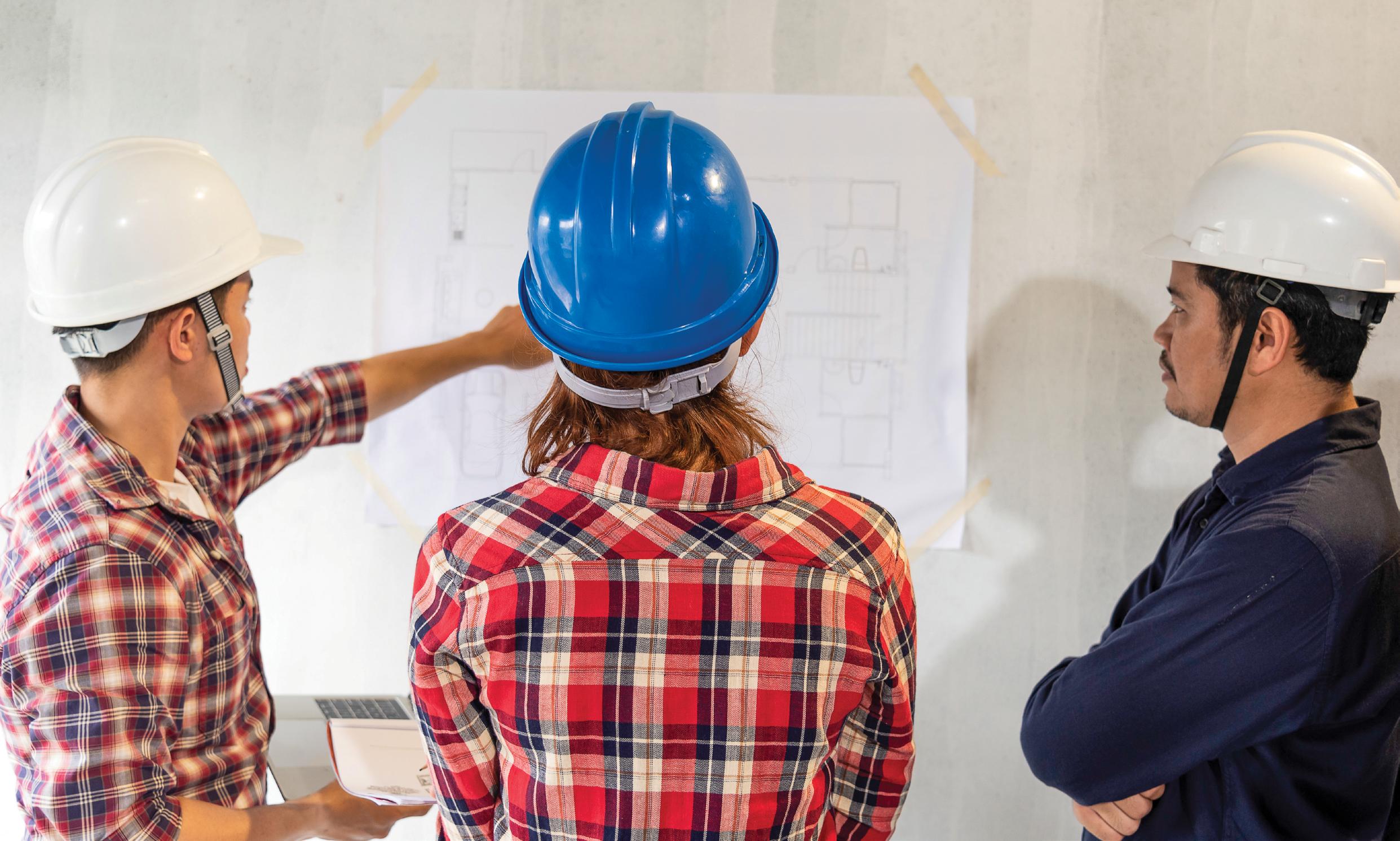
This transformative initiative goes beyond superficial fixes; it aims to target the root causes behind the underrepresentation of women in construction. Unlike some previous efforts that focused solely on corporate policies, this project adopts a life-cycle approach. It begins by educating and inspiring highschool students, parents, career advisors, and even the community at large about the exceptional prospects offered by the construction industry for women. Scholarships and career development support await female students studying construction in universities, providing tangible backing for those eager to enter the field.
“For this aspect we established a collaboration with Taylor Construction and their project, Women Breaking Ground, which aims to get as many women in nontraditional roles as possible.”
The Women in Construction project has connected
38 women with leadership training organised by The Leadership Institute between May and June 2023. A PhD scholarship for a female student has been awarded to carry out research on how the emerging “Construction 4.0” brings new opportunities and challenges for women and provides strategies and practical recommendations to empower women in this era. They are also offering Women in Construction scholarships for female students studying Undergraduate and Master degrees of construction management and property.
“We also provided one woman with a $5,000 upskill training fund to go to Cambridge in the UK and attend sustainability in construction training. Her goal is to come back to be a leader in sustainability at her company and help them become carbon neutral by 2050. It’s a really good example that women can really reach higher leadership or management positions and can specialise in a particular area.”
A major component of this project also involves the creation of online gender diversity training modules, ensuring an equitable and transparent recruitment and promotion process. By arming women with upskilling opportunities and tackling unconscious gender bias through the training modules, the researchers seek to increase female participation in leadership roles within the construction industry, thus fostering a thriving and diverse workforce.
“Women play such an important role in improving the culture of the industry. Gender diversity has been proven to be beneficial for both men and women, and can improve mental health and wellbeing in the construction industry. This is significant as the industry is notoriously known for the poor mental health of their workforce.”
Garden Hoes Podcast
Gardening podcast
Horticulture teacher and flower farmer
Garden how-tos and inspiration
www.lombardy.farm/garden-hoes-podcast
@sparkylifeoflia
Lia Lamela
Podcast: Sparky Life. Create the sparks in your life!

Evangelist of skilled trades • Engineer of soft skills development • Crew ambassador • Electrical apprentice
Stephanie Evans
Civil/commercial plumbing
Licenced real estate agent turned tradie, Melbourne

Leading the way for women in non-traditional trades
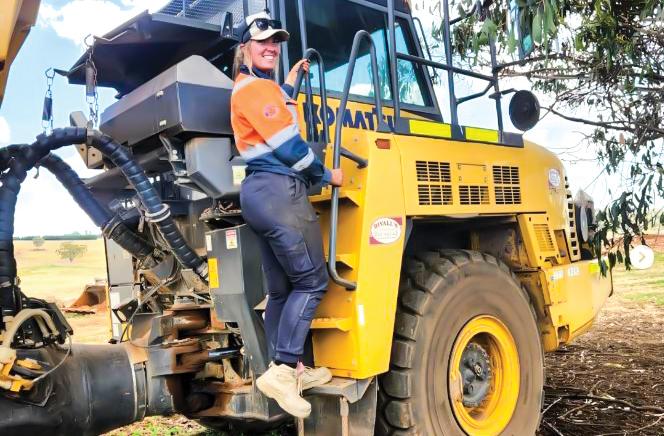
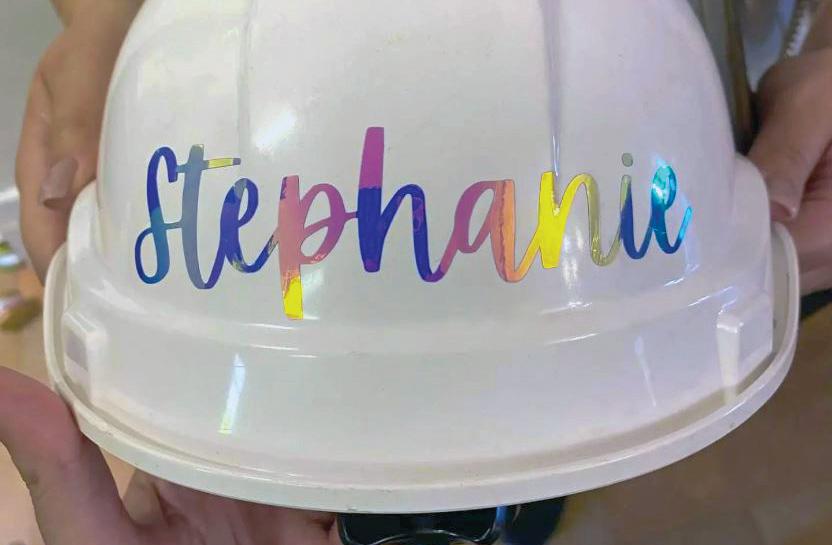

Peta (she/her)
Education
Surveyor-manager @surveyorsacademy
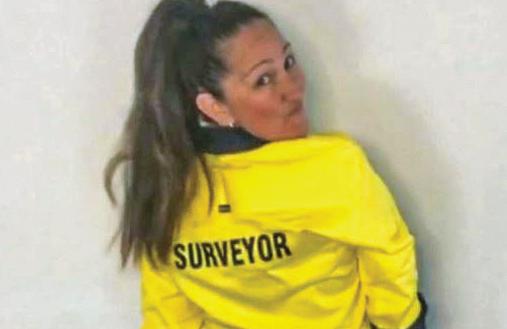
Host @definingboundaries
Cohost @thegeoholics
The Bobcat Sheila
Just an average sheila that enjoys machinery
Goulburn and surrounds, NSW
Rebecca Senyard
Licensed plumber and blogger
Qualified stylist @styled_by_bec
Freelance writer for various online sites
Home assessor 2022, 2023
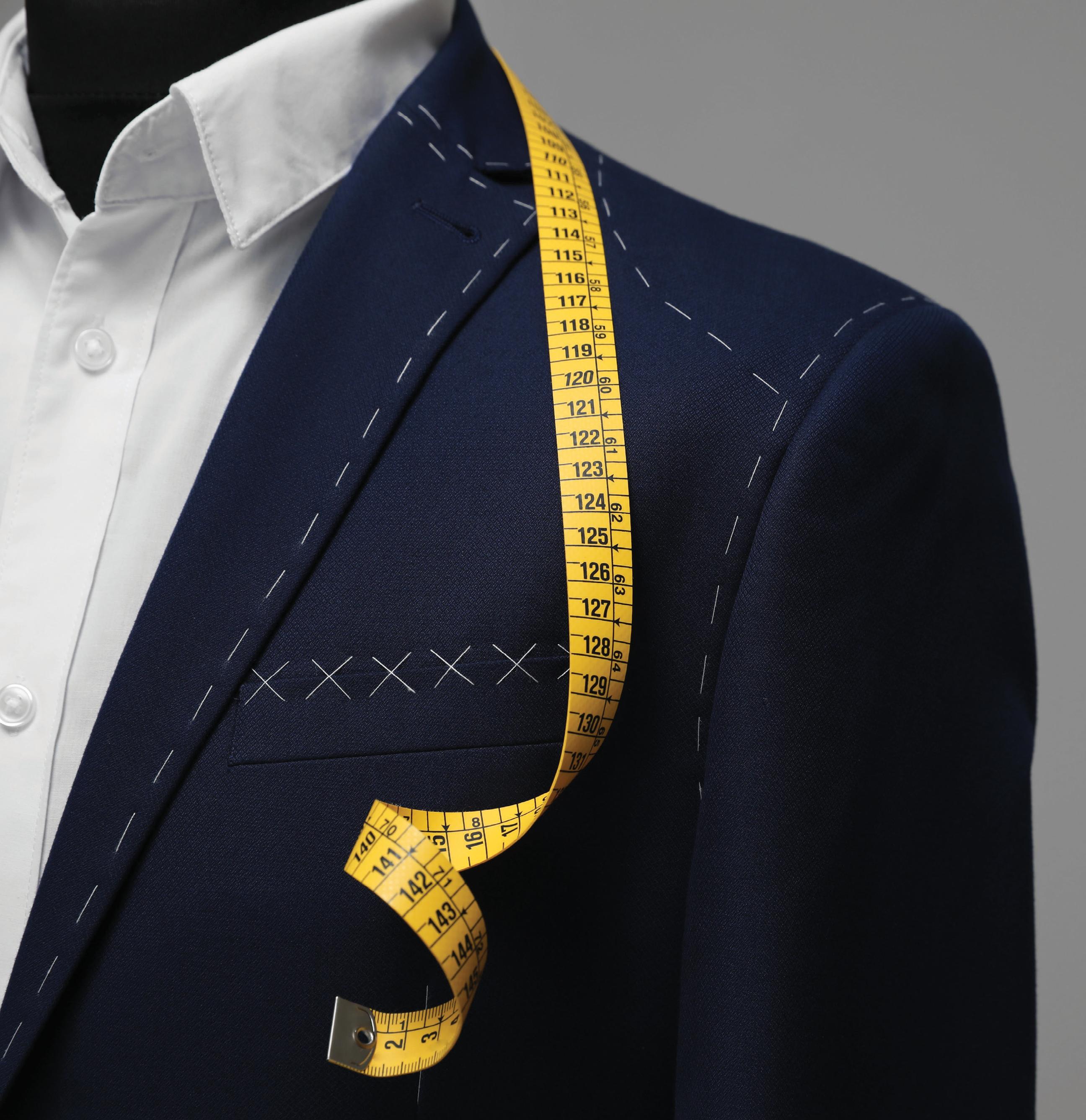
Women Building Australia is offering Business Resilience Training for women running or operating businesses in the building and construction industry.
Developed in conjunction with MYOB, on completion of the training modules, participants will be provided with a micro-credential from MYOB and gain a 2 month free MYOB subscription.

The topics covered are:

1. Introduction to bookkeeping
2. Managing cashflow
3. Managing clients
4. Managing suppliers
5. Managing payroll
6. Generating revenue
7. Managing compliance
Each topic is delivered via on demand teaching allowing participants to learn at their own pace.
Scan the QR code for more information.
womenbuildingaustralia.com.au